
Smarter email, faster business.
Auto-tag, parse, and respond to RFQs, quotes, orders, and more — instantly.
Trending
Categories
Aviation News. Powered by AI.
Verified by ePlane AI
AI fact-checks every story before it goes live.
Latest News
Trending News
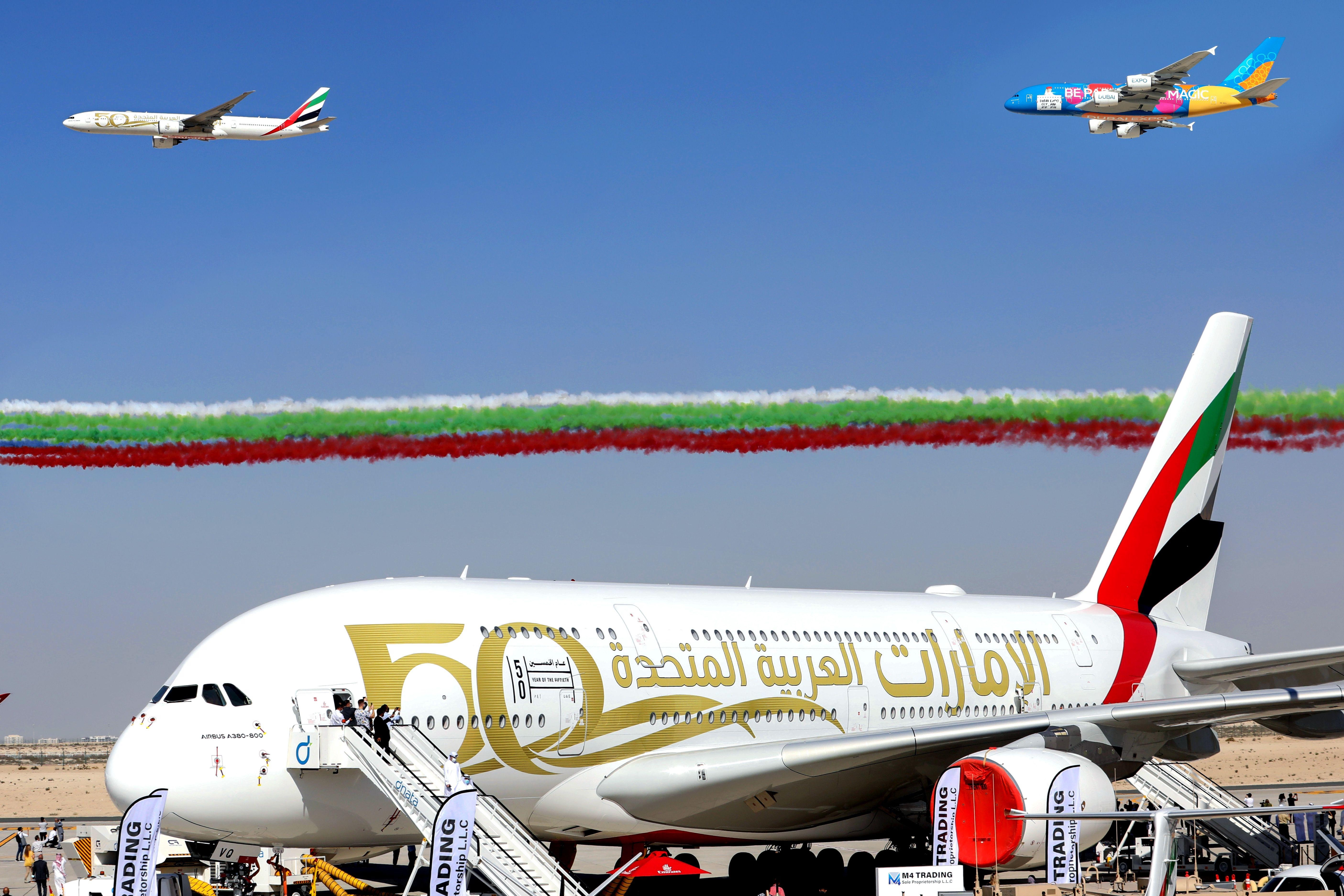
How the Boeing 777-300ER Compares to the Airbus A380 in Size
How the Boeing 777-300ER Compares to the Airbus A380 in Size
When discussing the largest commercial aircraft in operation today, the Boeing 777-300ER and the Airbus A380 are the two dominant models. Each represents a significant achievement in aerospace engineering but caters to different operational needs and market demands. Their differences in size, passenger capacity, and intended use highlight the distinct roles they play within global aviation.
Size and Capacity: A Detailed Comparison
The Airbus A380 holds the distinction of being the largest passenger airliner ever constructed. Its unique double-deck design enables it to accommodate up to 853 passengers in an all-economy configuration, or approximately 575 passengers in a more typical three-class layout. By contrast, the Boeing 777-300ER, the largest variant within the 777 family, can seat a maximum of 550 passengers in a high-density arrangement, though it more commonly carries around 396 passengers in a three-class configuration.
Physically, the A380 exceeds the 777-300ER in nearly every dimension except length. The 777-300ER measures 242 feet 4 inches (73.9 meters) in length, slightly longer than the A380’s 238 feet 7 inches (72.7 meters). However, the A380’s wingspan extends to 261 feet 8 inches (79.8 meters), significantly wider than the 777-300ER’s 212 feet 7 inches (64.8 meters). The A380 also stands taller at 79 feet (24.1 meters), compared to the 777-300ER’s height of 61 feet (18.5 meters). In terms of maximum takeoff weight, the A380’s 1,234,600 pounds (560,000 kilograms) far surpasses the 777-300ER’s 775,000 pounds (351,534 kilograms). These dimensions underscore the A380’s dominance in size and capacity, despite the 777-300ER’s advantage in length.
Operational Roles and Market Positioning
The Boeing 777-300ER was engineered to serve long-haul routes with a focus on operational efficiency and flexibility. Its twin-engine design allows it to operate from a broader range of airports, including those unable to accommodate the larger A380. This versatility, combined with lower operating costs and a moderate passenger capacity, makes the 777-300ER a preferred choice for airlines seeking to balance capacity with economic performance.
Conversely, the Airbus A380 was developed to maximize passenger volume on high-density international routes, primarily connecting major global hubs. Its immense size necessitates specialized airport infrastructure, limiting the number of airports capable of handling the aircraft. Nevertheless, the A380 remains a favored option for carriers aiming to transport large numbers of passengers efficiently on heavily trafficked routes.
Industry Response and Future Developments
The market’s response to these aircraft reflects their strategic roles within the aviation sector. Emirates, the largest operator of the A380, continues to invest in the superjumbo, with plans to upgrade its first-class suites and extend the aircraft’s operational lifespan through 2040. The airline has also expressed interest in Boeing’s developments, including visits to Boeing’s assembly facilities to monitor progress.
Meanwhile, other airlines are reassessing their fleet compositions. Kenya Airways, for example, is considering reintroducing the 777-300ER alongside exploring the Boeing 737 MAX, demonstrating the ongoing relevance of the 777 family. In response to Boeing’s advancements, Airbus is developing a stretched version of its A350 to compete directly with the forthcoming Boeing 777-9, highlighting the competitive dynamics shaping the large aircraft market.
Conclusion
While the Airbus A380 remains the world’s largest passenger aircraft by nearly every measure except length, the Boeing 777-300ER continues to hold a vital position in commercial aviation due to its versatility and efficiency. Both aircraft exemplify the evolving demands of the industry and maintain prominent roles in the global air travel landscape.
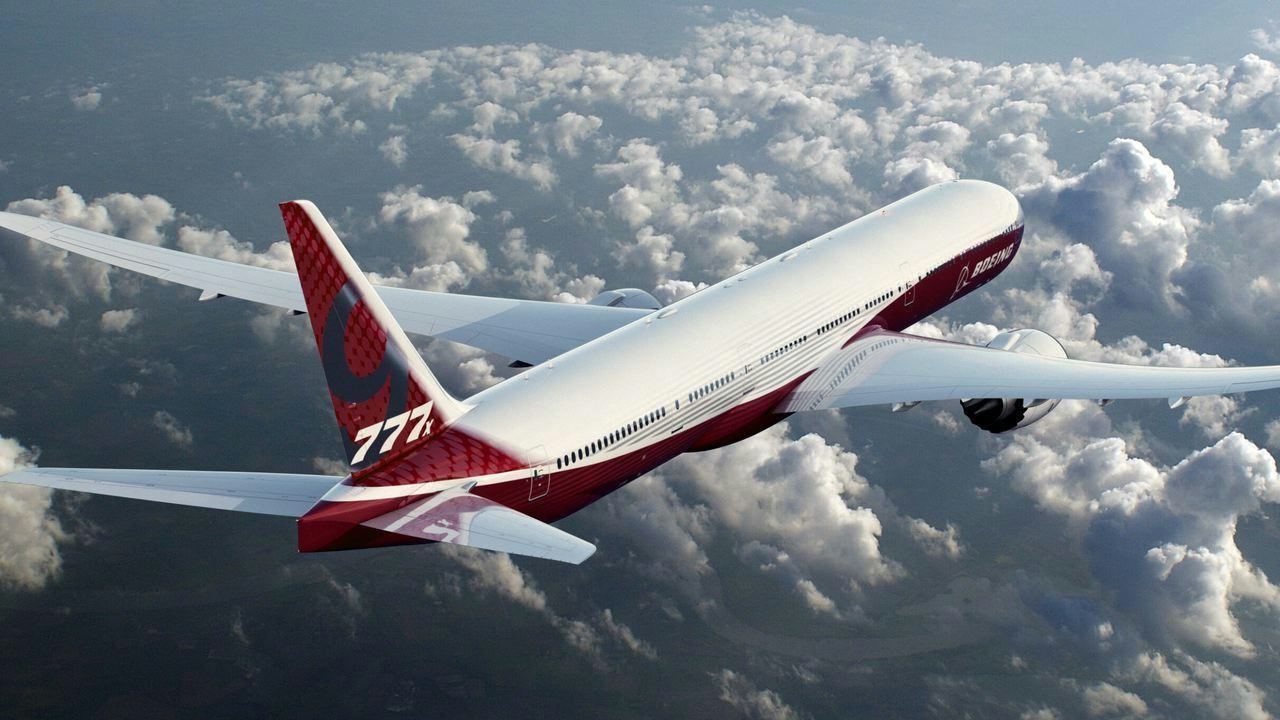
Emirates Confirms Order for Boeing 777X Aircraft
Emirates Reaffirms Commitment to Boeing 777X Aircraft
Emirates, one of the world’s foremost international airlines, has reaffirmed its commitment to the Boeing 777X program, reinforcing its leadership in long-haul aviation. Since its inception in 1985, Emirates has expanded rapidly from its Dubai hub, now serving destinations across nearly every continent with a fleet predominantly composed of widebody aircraft. The airline is the largest operator of the Airbus A380 and a significant user of the Boeing 777, both of which have been central to its global expansion.
Strategic Focus on Widebody Aircraft
Widebody aircraft have remained integral to Emirates’ growth strategy. In its early years, the airline expanded swiftly by wet-leasing Airbus and Boeing jets, quickly establishing routes across Asia, Europe, and the Middle East. By the late 1980s, Emirates had acquired its own aircraft and secured critical slots at major airports, including London Heathrow. The 1990s and 2000s saw further fleet development with the introduction of the Boeing 777 and a landmark commitment to the Airbus A380, solidifying Emirates’ reputation for operating some of the world’s largest and most advanced aircraft.
Currently, Emirates operates a fleet comprising 118 Airbus A380s, ten Boeing 777-200LRs, 119 Boeing 777-300ERs, and eight Airbus A350s. Its order book remains substantial, including 57 additional A350s, 30 Boeing 787 Dreamliners, and more than 200 Boeing 777X aircraft. The 777X is expected to become the cornerstone of Emirates’ future fleet, gradually replacing older 777s and A380s while assuming many of their long-haul routes.
Challenges and Industry Context
The 777X program has encountered significant challenges, notably delivery delays that have impacted Emirates as well as other major carriers such as Cathay Pacific, which recently placed its own 777X order despite similar setbacks. These delays have drawn close scrutiny within the aviation industry, even as Boeing’s commercial aviation division shows signs of recovery. In July, Boeing reported strong delivery figures for its 737 MAX and 787 programs, indicating renewed momentum in its production lines.
In parallel, Boeing has commenced production of the 777-8 Freighter, reinforcing its position in the global air cargo market and providing airlines with additional flexibility as they modernize their fleets. Competitors are closely monitoring how Emirates and other carriers manage the evolving landscape of widebody aircraft deliveries and operational planning.
Despite these uncertainties, Emirates’ substantial order for the 777X underscores its confidence in the aircraft’s ability to support its ambitious growth objectives. As the airline prepares to retire older jets, the 777X is poised to play a pivotal role in sustaining Emirates’ extensive global network and high-capacity operations.

Aviation Expert Richard Godfrey Attributes AI 171 Crash to RAT Deployment, Rules Out Pilot Error
Aviation Expert Richard Godfrey Attributes AI 171 Crash to RAT Deployment, Rules Out Pilot Error
Aviation expert Richard Godfrey has identified the automatic deployment of the Ram Air Turbine (RAT) as the primary cause of the Air India Flight 171 crash in Ahmedabad on June 12, dismissing widespread speculation that pilot error was to blame. In an interview with Geoffrey Thomas, Godfrey examined preliminary findings and data released by the Air Accident Investigation Bureau (AAIB) a month after the London-bound aircraft crashed, resulting in the deaths of all but one passenger.
Timeline and Key Findings
The AAIB’s preliminary report outlines a rapid sequence of events on the day of the crash. At 1:13 pm, the aircraft requested pushback and startup clearance, followed by Air Traffic Control (ATC) confirming the need for the full length of Runway 23 at 1:19 pm. Taxi clearance was granted at 1:25 pm, and by 1:33 pm, AI 171 was instructed to line up for takeoff. The flight was cleared for takeoff at 1:37 pm, but just two minutes after liftoff, the pilots issued a MAYDAY call before the aircraft crashed seconds later.
The report highlights that both engines shut down within one second of each other after the fuel supply was cut off. Cockpit voice recordings captured one pilot questioning the other about the engine shutdown, with the second pilot denying any action to cut the engines. Examination of the engines recovered from the crash site revealed they were in the “Run” position, and attempts had been made to relight them.
RAT Deployment and Technical Analysis
Godfrey’s detailed analysis, drawing on the preliminary report, flight data, and airport CCTV footage, revealed that the RAT was automatically deployed at approximately 1:38:47 pm. According to the data, both engines’ N2 values dropped below minimum idle speed at this time, triggering the RAT hydraulic pump to supply hydraulic power. The preliminary report included an image showing the RAT in its extended position but did not clarify the timing or cause of its deployment.
By synchronizing multiple data sources—including the flight data recorder (FDR) and ATC logs—Godfrey established that the RAT deployment occurred mere seconds before the crash. This timing strongly suggests a technical malfunction rather than any human intervention.
Conflicting Interpretations and Ongoing Investigation
Despite Godfrey’s findings, the investigation has been marked by conflicting interpretations. Some experts, including Captain Byron Bailey, have proposed the possibility of deliberate pilot action, even suggesting “suicide by the pilot” as a theory. However, Godfrey’s analysis, supported by the available data, firmly disputes this notion, attributing the crash to a technical failure centered on the RAT deployment.
In response to the incident, the U.S. Federal Aviation Administration (FAA) and Boeing reviewed the safety of fuel cutoff switch locks, which had come under scrutiny during the investigation. Both organizations have since affirmed the safety of these components.
The investigation into the AI 171 crash remains ongoing, with authorities yet to issue a definitive conclusion. For now, Godfrey’s assessment shifts the focus away from pilot error, underscoring the critical role of the RAT deployment in the tragic sequence of events.
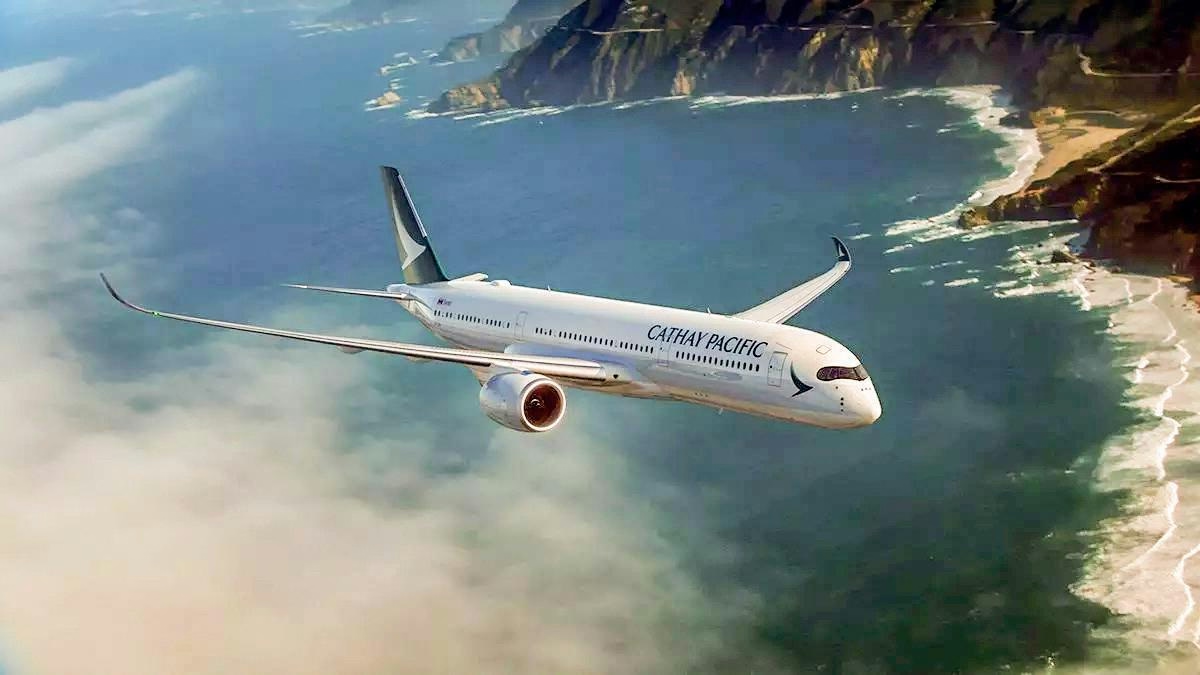
Cathay Pacific: Reimagining Aviation's Future Through Premium Innovation and Strategic Resilience
Cathay Pacific: Reimagining Aviation’s Future Through Premium Innovation and Strategic Resilience
As global travel recovers from the pandemic, airlines face the complex task of restoring profitability while addressing increasingly sophisticated customer expectations. Cathay Pacific, Hong Kong’s flagship carrier, exemplifies how operational innovation combined with a focus on premium service can generate sustainable value. Through strategic cost management, digital transformation, and investment in luxury experiences, the airline is not merely recovering but actively positioning itself as a leader in the evolving aviation industry.
Operational Innovation and Resilience
Cathay Pacific’s post-pandemic approach integrates pragmatic cost optimization with technological advancement. Between 2023 and 2025, the airline reduced its flight capacity by 30%, consolidated subsidiaries including Cathay Dragon, and implemented voluntary unpaid leave for approximately 27,000 employees, reflecting measures reminiscent of its 2009 crisis response. Executive salary reductions and a transition to more fuel-efficient aircraft, such as the Airbus A330neo, have further contributed to stabilizing cash flow and lowering unit costs.
A cornerstone of Cathay’s strategy is its digital transformation. Partnering with Trax, the airline digitized its engineering operations through the adoption of eMRO software, streamlining maintenance processes and reducing reliance on paper-based systems. This innovation not only curtails expenses but also enhances operational reliability, a critical factor in maintaining customer trust in an industry where delays can significantly impact reputation. The 2024 launch of the Cathay Pacific mobile application has further improved the passenger experience by providing real-time communication, baggage tracking, and digital check-in capabilities.
Nonetheless, the airline’s innovation drive faces challenges. The ongoing restructuring of its HK Express network introduces operational complexities and heightens competition as Cathay seeks to optimize its regional presence.
Elevating the Premium Experience
In an increasingly commoditized market, Cathay Pacific has intensified its focus on premium differentiation. The reopening of its Beijing Capital Lounge in 2025 serves as a prime example of this strategy. Covering more than 9,000 square feet, the lounge combines cultural authenticity with contemporary luxury, featuring regional cuisine at the Noodle Bar, premium Chinese teas at the Teahouse, and curated art installations by Dr. Henrietta Tsui-Leung. These elements reinforce Cathay’s brand identity while enhancing the overall customer journey.
This premium offering supports Cathay’s robust network, including seven daily return flights between Hong Kong and Beijing and over 300 weekly return flights to 23 mainland destinations during peak periods. By delivering a seamless travel experience from airport to aircraft, the airline captures ancillary revenue through lounge access, dining, and loyalty programs, while cultivating repeat business among discerning travelers.
Strategic Positioning Amid Market Dynamics
Cathay’s concentrated focus on the Chinese mainland is underpinned by a HK$100 billion investment in lounges, fleet renewal, and digital infrastructure. The airline’s commitment to expanding its Boeing 777-9 orders signals a long-term vision for fleet modernization, though it also presents logistical and financial challenges. This move is likely to prompt competitors to accelerate their own fleet upgrades, intensifying competition for market share within Asia’s aviation sector.
Market response to Cathay’s recent profit increase—driven by higher passenger volumes and reduced fuel costs—has been favorable. However, as the airline advances its fleet expansion and network realignment, it must carefully balance innovation with operational discipline to sustain its competitive advantage.
By integrating premium service, digital innovation, and strategic investment, Cathay Pacific is redefining its future, illustrating how resilience and forward-thinking can reshape success in the global aviation industry.
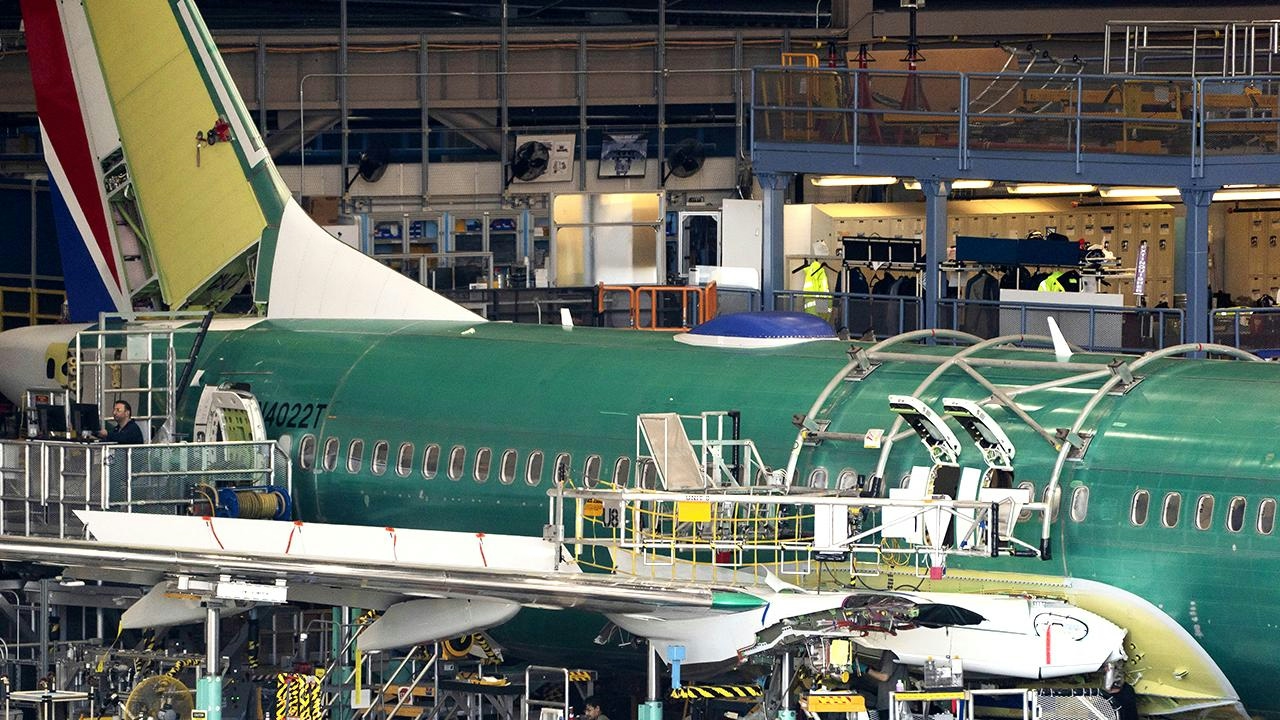
China and Boeing Near Major Aircraft Order, Report Says
China and Boeing Near Landmark Aircraft Deal Amid Political and Market Pressures
Boeing is reportedly on the verge of securing a significant agreement with China for the sale of up to 500 aircraft, according to Bloomberg. This potential deal would represent a major breakthrough for the U.S. manufacturer, though it remains dependent on the resolution of ongoing political tensions between Beijing and the U.S. government. Historically, aircraft orders between China and Western manufacturers have been heavily influenced by diplomatic considerations, with Boeing and its European rival Airbus navigating a complex and often fraught political landscape.
Political and Trade Challenges in U.S.-China Aviation Relations
Boeing’s relationship with China has faced considerable challenges in recent years. The company was effectively sidelined in 2017 following the imposition of tariffs on Chinese goods by then-President Donald Trump. These tariffs were maintained and expanded under President Joe Biden, who introduced additional economic and industrial sanctions in response to China’s covert alignment with Russia after the 2022 invasion of Ukraine. The trade tensions intensified further when Trump was reelected in 2020, leading to additional tariffs that complicated U.S.-China trade relations and, by extension, commercial aviation dealings.
Despite these obstacles, negotiations between Boeing and Chinese authorities have reportedly progressed, suggesting a possible easing of tensions if political barriers can be overcome. Industry analysts emphasize that even if the deal is not finalized imminently, the ongoing discussions highlight the limitations of China’s domestic aircraft manufacturing capabilities. The COMAC C919, China’s homegrown narrowbody jet, has yet to meet the country’s rapidly growing demand for new airliners. This shortfall was particularly evident following the 21-month grounding of the Boeing 737 MAX after two fatal crashes in 2018 and 2019. China was the first country to ground the MAX and the last to recertify it, only doing so after the U.S. Federal Aviation Administration cleared the aircraft in late 2021.
Market Dynamics and Competitive Pressures
Airbus, which assembles A320 and A321neo jets in Tianjin and delivers additional aircraft from Europe, has also been unable to fully compensate for Boeing’s absence in the Chinese market. China currently lacks the capability to produce widebody aircraft, a segment where Airbus alone cannot satisfy the country’s demand. Consequently, many industry observers argue that China’s aviation sector remains reliant on Boeing, despite ongoing political frictions and ambitions to develop a self-sufficient domestic aerospace industry.
The potential Boeing-China deal emerges amid intensifying competition in the global aircraft market. Other manufacturers, such as SNC, are attempting to challenge established players by pursuing major contracts, including the U.S. Navy trainer competition. Meanwhile, shifting market dynamics, driven by evolving international travel patterns, are influencing airline strategies. For instance, American Airlines’ recent requests for frequency waivers on routes to China and Cuba may affect operational decisions and demand for new aircraft in these regions, with potential implications for Boeing’s market positioning.
As Boeing and China approach a landmark agreement, the outcome will not only shape the future of U.S.-China commercial aviation relations but also impact the broader competitive environment. Airbus and other manufacturers are closely monitoring developments, seeking opportunities to defend or expand their market share in one of the world’s fastest-growing aviation markets.

33 Hours and 11,000 Kilometers: Delivering a Restored DC-3
33 Hours and 11,000 Kilometers: Delivering a Restored DC-3
On August 11, 2025, at 11:19 local time, a Douglas DC-3, extensively modernized into a Basler BT-67, departed Wittman Regional Airport in Oshkosh, Wisconsin, embarking on an 11,000-kilometer delivery flight to South America. The aircraft is destined to join Mirgor, an Argentine company, for cargo operations within Argentina and seasonal flights to Antarctica under an agreement with the Argentine Air Force.
A Storied History and Comprehensive Modernization
This aircraft, originally constructed in 1943 as a Douglas C47-A-10-DK, began its service with the US Army Air Force in February 1944 under the registration 42-108859 before transferring to the Royal Air Force as KG403. By the 1970s, it had transitioned into civilian service with Canadian and US airlines, bearing registrations CF-BKP, N107AD, and N700CA. In July 2013, Basler Turbo Conversions, headquartered at Wittman Regional, acquired the DC-3 and initiated a thorough transformation into the Basler BT-67.
Basler’s remanufacturing process is among the most extensive in the aviation industry. Each BT-67 undergoes a complete airframe overhaul, aerodynamic and structural enhancements, and installation of new systems to improve reliability. The aircraft is powered by Pratt & Whitney Canada PT6A-67R engines paired with Hartzell propellers, combining modern performance capabilities with the enduring legacy of the DC-3.
Prior to delivery, the BT-67 (serial number 12438) completed several test flights in June and July 2025 under its US registration N700CA, a designation it had held since 1992 while operated by Champlain Enterprises Inc. The delivery flight commenced on August 11, with the initial and longest leg from Oshkosh (OSH/KOSH) to Fort Lauderdale (FLL/KFLL), covering 2,154 kilometers in approximately seven hours. Following a four-day stopover in Fort Lauderdale, the aircraft proceeded on August 15 to Panama City (Balboa) and then to Trujillo, Peru, covering 3,780 kilometers in nearly 12 hours of flight time.
Over the subsequent three days, the BT-67 completed additional legs from Trujillo to Antofagasta, Chile, then to Puerto Montt, Chile, and onward, culminating in a total of 33 hours of flight time throughout the journey.
Navigating Industry Challenges and Market Dynamics
Delivering a restored DC-3 across continents presents significant challenges. The aviation sector continues to contend with supply chain disruptions, as underscored in a recent report by BOC Aviation. While aircraft deliveries are becoming more predictable, persistent supply chain issues are anticipated to endure throughout the decade, potentially affecting the timely completion and delivery of retrofitted aircraft such as the BT-67.
Market dynamics further influence the environment. Boeing’s recent narrowing of losses, reported by The Wall Street Journal, may impact competitor strategies and investor confidence across the industry. Additionally, broader economic factors, including potential changes in Federal Reserve leadership, continue to shape the landscape, affecting both manufacturers and operators.
Despite these complexities, the successful delivery of this historic DC-3—now registered as LV-VYL in Argentina—exemplifies the resilience of classic airframes and the adaptability of the aviation industry amid a challenging global environment.

Royal Thai Air Force to Upgrade Engines with Rolls-Royce T56 Series 3.5
Royal Thai Air Force to Upgrade Engines with Rolls-Royce T56 Series 3.5
Partnership and Program Overview
Rolls-Royce has announced a strategic collaboration with Thai Aviation Industries (TAI) to implement the T56 Series 3.5 engine upgrade for the Royal Thai Air Force’s (RTAF) fleet of C-130H transport aircraft. This initiative positions the RTAF as the first operator in the Asia-Pacific region to adopt this advanced engine enhancement, which aims to reduce operating temperatures, extend component lifespan, and improve overall aircraft reliability.
The upgrade program involves Boeing Distribution Inc (BDI), Rolls-Royce’s global distributor for the 3.5 upgrade kits, supplying essential components to Segers Aero Corporation for integration into the T56 engines. Each C-130H aircraft, powered by four T56 engines, will benefit from these improvements, which have already demonstrated success with the United States Air Force and NOAA’s P-3 fleets.
Scope and Expected Benefits
The contract encompasses upgrades for six aircraft, including spare engines, and is projected to reduce operational costs, decrease maintenance demands, and achieve fuel savings exceeding 10 percent. These enhancements are expected to sustain the RTAF’s C-130H fleet in active service until at least 2040, ensuring long-term operational capability.
Alex Zino, Director of Business Development and Future Programmes at Rolls-Royce, emphasized the significance of the partnership, stating, “We are proud to support our Royal Thai Air Force partners, enabling them to maintain critical transport air capability for decades to come. This contract, secured through our longstanding partnership with TAI and Segers, demonstrates our commitment to delivering advanced technologies and reliable equipment to armed forces worldwide.”
Amber Carnes, Vice President of T56 Programs at Rolls-Royce, highlighted the engine’s enduring legacy: “The T56 is a robust and reliable engine, serving military and civil aircraft globally for over 70 years. This contract underscores our ongoing commitment to supporting transport aircraft fleets worldwide.”
Regional Impact and Future Challenges
Air Chief Marshal Piboon Vorravanpreecha, Managing Director of Thai Aviation Industries, underscored the project’s importance, noting, “TAI is proud to serve as the prime contractor for the T56 Series 3.5 upgrade, supporting the modernization of the C-130H fleet. This initiative marks a major milestone for the Royal Thai Air Force and showcases TAI’s growing role in regional aerospace support.”
Following a competitive tender process, the Royal Thai Air Force selected Segers Aero Corporation and Turbo Power LLC, both based in the United States, to execute the upgrade.
While Rolls-Royce’s recent surge in profits and share prices—driven by strong demand for its jet engines—provides a favorable backdrop for the program, potential challenges remain. These include logistical and technical complexities such as ensuring compatibility with existing aircraft systems and securing ongoing support services. Additionally, competitors in the engine market may respond by advancing their own technologies and offering cost-effective alternatives.
Nonetheless, the RTAF’s decision to adopt the T56 Series 3.5 upgrade reflects a clear commitment to modernizing its fleet and maintaining operational readiness well into the future.
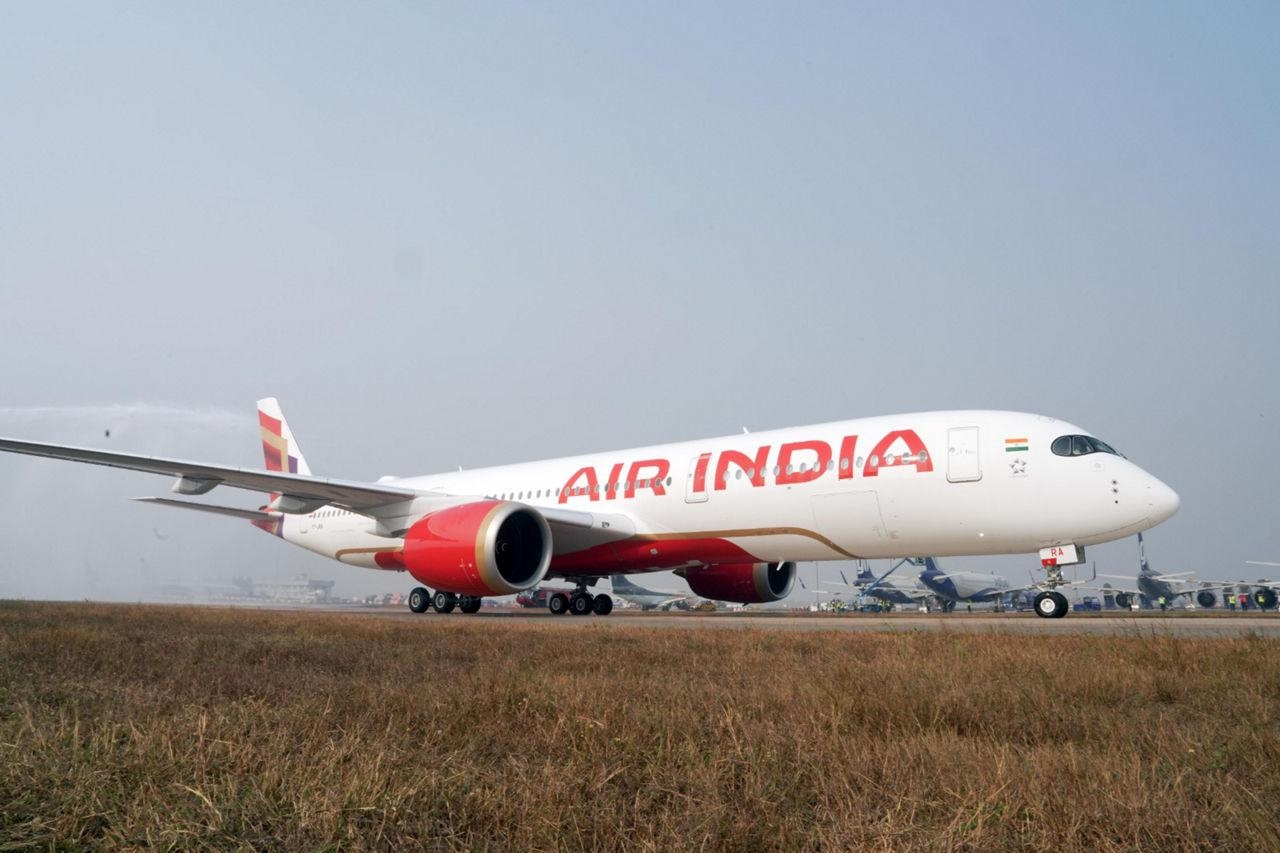
Air India Announces Delivery Schedule for A321neo, A350-1000, and 787-9 Aircraft
Air India Announces Delivery Schedule for A321neo, A350-1000, and 787-9 Aircraft
Major Fleet Modernization Underway
Air India Group, now under the ownership of the Tata Group, is advancing a landmark fleet renewal initiative that promises to transform its operational capabilities and competitive positioning within the Indian aviation sector. Central to this effort is an unprecedented order of 570 aircraft, among the largest in the history of commercial aviation. This extensive acquisition includes the latest models from Airbus and Boeing, notably the A321neo, A350-1000, 787-9 Dreamliner, and 777-9. These additions are expected to significantly expand Air India’s capacity and modernize its fleet.
Delivery Timeline and Deployment Plans
To date, the Air India Group—which comprises both Air India (AI) and Air India Express (IX)—has taken delivery of six Airbus A350-900s alongside more than 40 Boeing 737 MAX aircraft. The next phase of this fleet expansion is scheduled to commence in mid-2025, with the introduction of the first A321neo, A350-1000, and 787-9 Dreamliner aircraft. This phase represents a critical step in the airline’s strategy to increase capacity and enhance service offerings.
Air India Express will be the initial operator of the new A321neo, launching scheduled services from April 15, 2025. The inaugural routes will connect Delhi (DEL) with Bengaluru (BLR) and Srinagar (SXR), with subsequent expansions on April 20 to include Ayodhya (AYJ) and Jaipur (JAI). The A321neo will be configured with 180 economy seats and 12 business class seats, providing improved passenger options on key domestic routes. Currently, Air India operates two A321neos (registrations VT-RTC and VT-RTD) in a 192-seat dual-class layout.
Supply Chain Challenges and Operational Adjustments
Despite the progress, Air India continues to grapple with significant supply chain disruptions. CEO Campbell Wilson has acknowledged ongoing difficulties in procuring essential components such as engines, fuselages, and premium cabin seats. These challenges are expected to cause delivery delays from both Airbus and Boeing, potentially affecting the airline’s growth trajectory for the next four to five years. In response, Air India is extending the operational lifespan of older aircraft, which entails increased maintenance costs, and is facing obstacles in leasing additional planes due to global shortages. The airline is also exercising prudence regarding further Boeing orders amid manufacturing and regulatory constraints.
Widebody Fleet Expansion: A350-1000 and 787-9
The first A350-1000 destined for Air India is nearing completion at Airbus’s Toulouse facility and is anticipated to be delivered in 2026. Currently registered as F-WZFI, the aircraft will soon be re-registered under the VT-series for Indian operations. Concurrently, the initial Boeing 787-9 Dreamliners from the 2023 order are expected to arrive by the end of 2025. Three 787-9s are presently in production at Boeing’s Charleston, South Carolina plant, equipped with General Electric GEnx-1B engines.
Order Composition and Market Implications
Air India’s comprehensive 570-aircraft order includes 20 A350-900s, 20 A350-1000s, 140 A320neos, and 70 A321neos from Airbus, alongside 20 787-9 Dreamliners, 10 777X, and 190 737-8 MAX aircraft from Boeing. Additionally, a 2024 order comprises 10 more A350s and 90 A320 Family aircraft. This sweeping modernization is anticipated to provoke strategic responses from rival carriers, who may reassess their fleet plans in light of Air India’s expanded capacity. Industry analysts expect this development to intensify competition and elevate passenger service standards across the Indian aviation market.
Commitment to Sustainability and Efficiency
Air India’s investment in next-generation aircraft reflects a strong commitment to operational efficiency, passenger comfort, and environmental stewardship. The new A350 and 787-9 models offer substantial fuel savings and reduced emissions, aligning with global efforts to promote sustainable aviation. As these aircraft enter service from mid-2025 onward, Air India is positioned to lead the industry’s transition toward eco-friendly, high-capacity air travel.
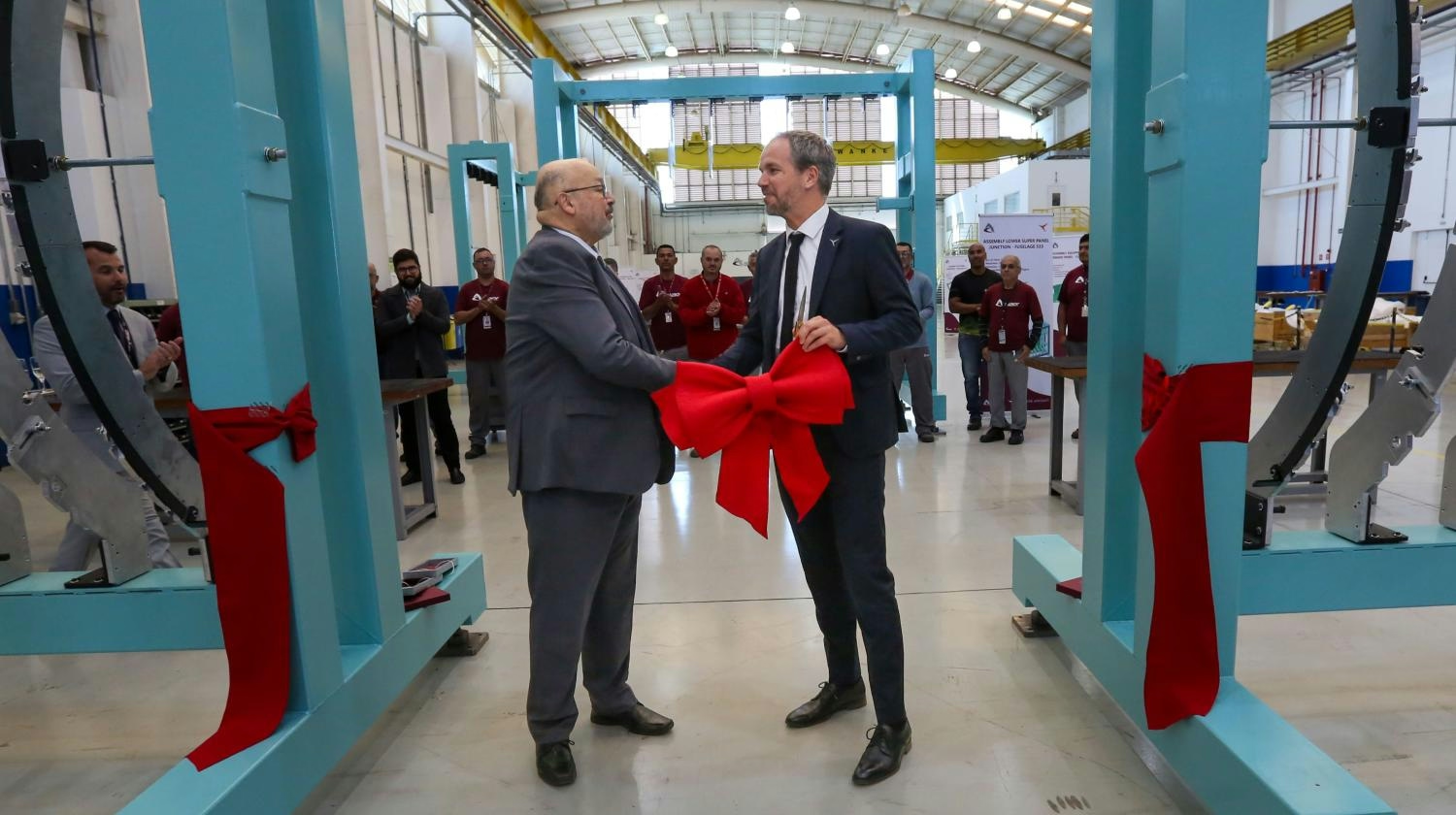
Bombardier Opens New Manufacturing Facility in Moorpark
Bombardier Opens New Manufacturing Facility in Moorpark
Bombardier has inaugurated its newly relocated and expanded component manufacturing facility in Moorpark, California, marking a pivotal development in the company’s strategy to bolster its U.S. operations. The 46,000-square-foot site replaces the previous Los Angeles-area facility acquired in 2022 and serves as a state-of-the-art hub for producing components for Bombardier’s flagship Global 7500 and Global 8000 business jets.
Strategic Significance and Local Engagement
The ribbon-cutting ceremony on August 20, 2025, was attended by Janice Parvin, Chair of the Ventura County Board of Supervisors, alongside local community leaders and Bombardier employees. The Moorpark facility currently employs 30 staff members, reflecting the company’s emphasis on technical expertise and stringent quality standards in aircraft manufacturing.
David Murray, Executive Vice President of Manufacturing, IT, and Bombardier Operational Excellence System, highlighted the strategic importance of the relocation. He stated, “This facility secures our long-term presence in California and strengthens our U.S. manufacturing base.” Murray further described the Moorpark site as emblematic of Bombardier’s ongoing commitment to innovation, high-quality employment, and fostering regional partnerships.
Broader Industry Context and Market Implications
The relocation and expansion align with Bombardier’s broader strategy to enhance its footprint in the U.S. aerospace sector, encompassing both aircraft manufacturing and aftermarket services. Since leasing the Moorpark facility in 2024, the company has steadily integrated the site into its global supply chain, reinforcing its dedication to local communities.
Nonetheless, this expansion occurs within a competitive and rapidly evolving manufacturing landscape. Bombardier may encounter challenges related to supply chain logistics, regulatory compliance, and intensified market competition. Industry analysts observe that competitors such as Jets MRO and Dassault Aviation might respond by upgrading their manufacturing capabilities or expanding service offerings to maintain market share. The recent facility expansions by companies like Westrock Coffee and NFI Group’s Alexander Dennis subsidiary further illustrate the dynamic and competitive nature of manufacturing growth across various sectors.
Investor response to Bombardier’s investment has been positive, with increased interest in the company’s aerospace division. The new Moorpark facility signals a long-term commitment to advanced engineering and component manufacturing within California’s robust aerospace industry.
With the Moorpark site now fully operational, Bombardier aims to solidify its regional presence while advancing its leadership in business jet innovation and manufacturing excellence.
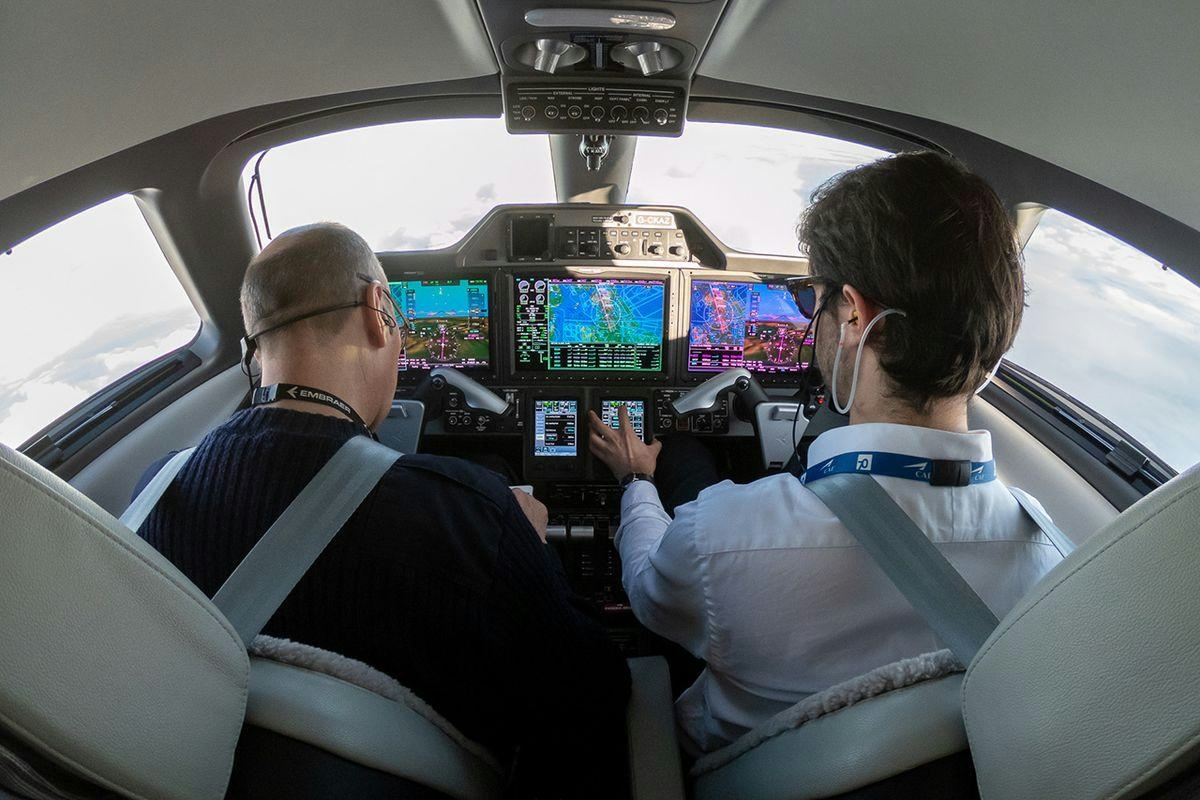
TrustFlight strengthens aviation safety with triple acquisition
TrustFlight Strengthens Aviation Safety with Triple Acquisition
TrustFlight, a prominent provider of aviation safety and compliance solutions, has announced the acquisition of three specialist firms from Wheels Up: Baines Simmons, Kenyon Emergency Services, and Redline Assured Security. This strategic move is poised to transform the industry’s approach to safety by establishing TrustFlight as the sole integrated partner offering a comprehensive range of services, including training, regulatory expertise, aviation security, quality assurance, and incident support.
A Unified Approach to Aviation Safety
The expanded TrustFlight organization will now serve approximately 1,600 aviation businesses worldwide, encompassing airports, operators, maintenance providers, manufacturers, and regulators. By consolidating these services under one umbrella, clients will benefit from streamlined processes that traditionally required coordination among multiple vendors. TrustFlight’s CEO, Karl Steeves, underscored the importance of this holistic approach, describing safety in aviation as a “lifecycle, not a point solution or set of vendors.” He highlighted that integrating these acquisitions with TrustFlight’s existing software and data platform will create an “operating system for safety,” designed to identify risks earlier, maintain continuous compliance, and expedite recovery from incidents.
The aviation sector currently faces rapidly evolving regulatory requirements, emerging security threats, and increased public scrutiny. Operators are demanding integrated safety solutions that cover training, compliance, security, and crisis response. TrustFlight’s acquisition aims to replace fragmented systems with a unified model, promising to reduce risks, lower compliance costs, shorten audit durations, and enhance overall industry resilience.
Industry Implications and Challenges
While the acquisition marks a significant expansion, it also presents operational challenges related to integrating three distinct companies. Additionally, the scale and potential market impact of the deal may attract regulatory scrutiny. Industry analysts suggest that this consolidation could intensify competition within the maintenance, repair, and overhaul (MRO) sector, potentially driving down prices and elevating operational standards.
Competitors are already adjusting to these shifting market dynamics. For instance, Air Mauritius is pursuing strategic partnerships to bolster its capabilities, while Signia Aerospace is expanding through acquisitions to maintain competitiveness. These developments reflect a broader trend of consolidation and innovation as companies strive to offer more comprehensive safety and compliance solutions.
TrustFlight has confirmed that the acquired firms will retain their existing management teams, branding, technical expertise, and sales operations. Client contracts and contacts will remain intact, but customers will gain access to an expanded suite of services coordinated through TrustFlight’s integrated platform.
This acquisition represents a pivotal moment for TrustFlight, enhancing its position as a comprehensive safety partner amid mounting regulatory and operational pressures in the aviation industry. The move may well establish new benchmarks for safety, efficiency, and integration across the sector.

YVR Advances Travel Experience with Digital Twins, AI, and Biometrics
YVR Advances Travel Experience with Digital Twins, AI, and Biometrics
Vancouver International Airport (YVR) is accelerating its digital transformation to enhance passenger experience and operational resilience by deploying advanced technologies such as digital twins, artificial intelligence (AI), and biometrics. Under the leadership of Albert Van Veen, Vice President of Innovation and Chief Information Officer, YVR is pursuing a data-driven strategy designed to streamline airport processes and improve decision-making across its operations.
Leadership Driving Innovation
Albert Van Veen, who joined YVR a year ago after senior roles at FastID and Amsterdam Airport Schiphol, is internationally recognized for his expertise in IT transformation and digital identity. He now spearheads YVR’s efforts to redefine the travel experience by integrating digital identity, biometrics, and AI-powered solutions. These initiatives aim to make travel faster, more efficient, and secure for passengers while enhancing the airport’s operational capabilities.
At the forthcoming FTE Global event in Long Beach, California, Van Veen will present how YVR is leveraging digital twins and AI to revolutionize airport operations. YVR has been a pioneer in deploying an operational digital twin—a virtual replica of airport systems—that optimizes passenger flow and drives innovation beyond traditional aviation boundaries. This digital twin integrates with core platforms such as Maximo, SITA, ADB Safegate, and Genetec, creating a comprehensive end-to-end airport flow solution.
Expanding AI and Industry Collaboration
YVR is also launching an AI Marketplace for aviation, a collaborative platform designed to enable airports of all sizes to access, adopt, and co-develop intelligent solutions. Van Veen emphasizes that the AI Marketplace is intended to support both major hubs and smaller regional airports, fostering industry-wide collaboration and accelerating the adoption of innovative technologies.
A central focus of YVR’s digital strategy is the ongoing integration of AI into its operations. The airport is developing modules that connect predictive analytics and intelligent traffic flow models to its digital twin, enhancing operational efficiency and responsiveness. However, these digital ambitions face challenges. Research from the University of Sharjah points to limitations in current digital twin models regarding the full utilization of renewable energy, which may affect sustainability objectives. Additionally, industry observers such as Skift have expressed skepticism about the broader impact of AI-powered digital twins, particularly in areas like airfares and loyalty programs.
Navigating a Competitive and Evolving Landscape
The competitive landscape in airport technology is rapidly evolving, with other airports and technology providers intensifying their digital and biometric offerings. For instance, Socure recently introduced a Workforce Verification solution aimed at combating employee fraud, reflecting a wider industry trend toward secure, automated identity verification. As biometric technologies advance, the imperative for robust security measures to counter increasingly sophisticated fraud schemes remains critical.
YVR’s commitment to digital innovation positions it at the forefront of the aviation industry’s transformation. Nevertheless, the airport’s journey will require continuous collaboration, adaptation, and vigilance as new challenges and opportunities arise in this dynamic environment.
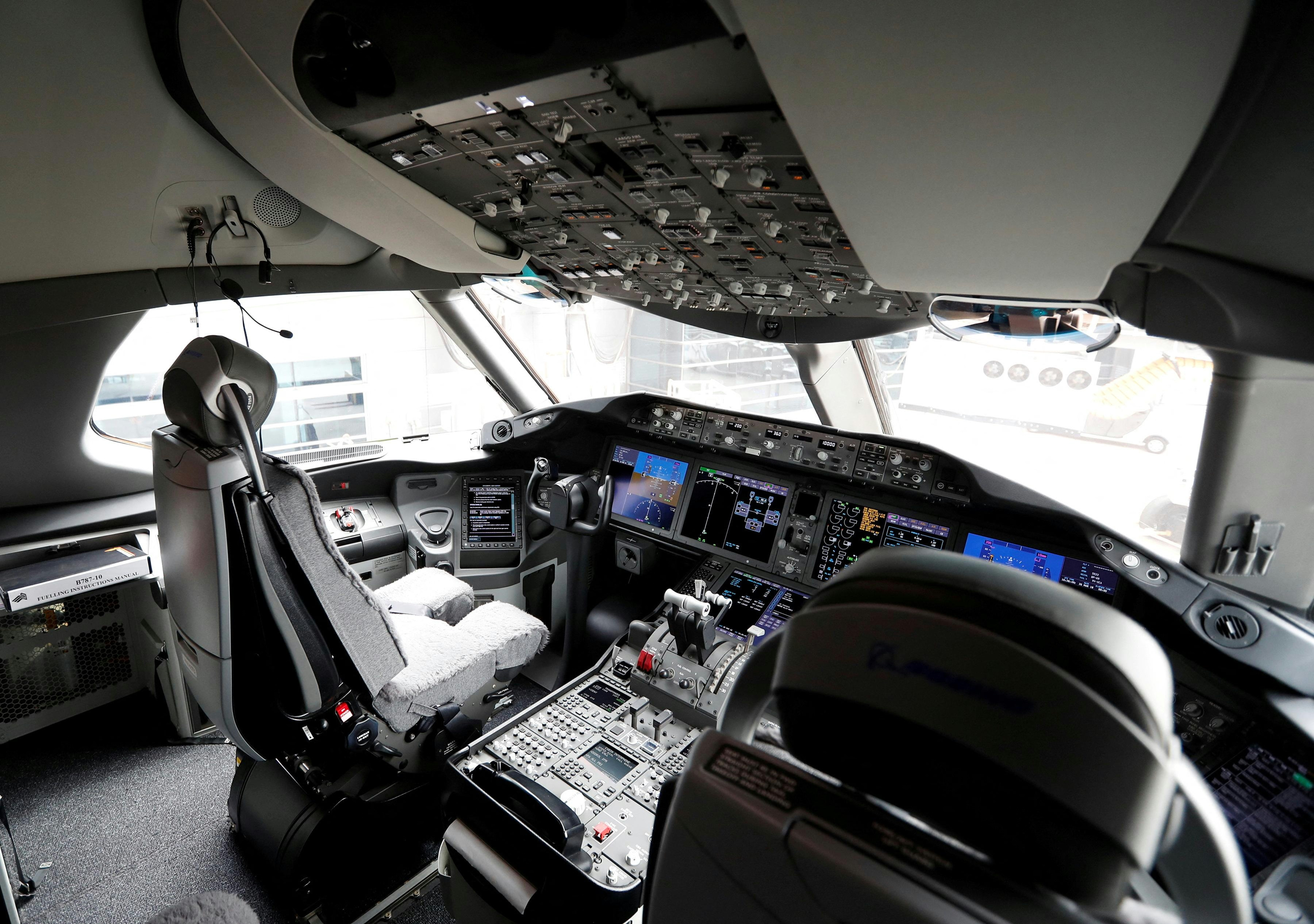
US Expert: Boeing 787 Experienced Fuel Switch Cut-Off in 2019; Japanese Pilots Did Not Intervene
US Expert Highlights Fuel Switch Cut-Off in 2019 Boeing 787 Incident; Japanese Pilots Did Not Intervene
A preliminary investigation into the Air India AI 171 crash in Ahmedabad has renewed focus on the Boeing 787’s fuel switch system. India’s Aircraft Accident Investigation Bureau (AAIB) reported that the fuel switch had shifted from the “Run” to the “Cutoff” position prior to the crash. The 15-page report, released this week, included a paraphrased exchange between Captain Sumeet Sabharwal and First Officer Clive Kunder, in which one pilot questioned the other about cutting off the fuel supply. Both pilots denied any deliberate action to do so. Shortly thereafter, a Mayday call was issued, and the aircraft crashed into a hostel for medical students, resulting in the deaths of all on board.
The AAIB report does not clarify how or why the fuel switch moved to the “Cutoff” position, leaving open the possibility of either pilot error or mechanical malfunction. To provide further insight, FinancialExpress.com consulted Mary Schiavo, a US aviation expert, who dismissed theories of intentional pilot intervention. Schiavo emphasized the absence of evidence supporting deliberate action and called for the full release of cockpit voice recorder (CVR) transcripts to avoid misinterpretation. She stated, “There is nothing here to suggest pilot suicide or murder.”
Parallels with 2019 ANA Boeing 787 Incident
Schiavo also referenced a similar event in 2019 involving an All Nippon Airways (ANA) Boeing 787. During final approach from Tokyo to Osaka, both engines failed after the aircraft’s software erroneously detected that it was on the ground. This triggered the Thrust Control Malfunction Accommodation System, which cut fuel to the engines. According to Schiavo, the pilots did not engage the fuel cutoff switches. The malfunction was ultimately traced to a software glitch rather than human error. The ANA flight, carrying 109 passengers and 9 crew members, landed safely without injuries.
Regulatory Response and Ongoing Investigations
The Air India crash has intensified scrutiny of Boeing’s fuel switch mechanisms. India’s civil aviation authority has ordered inspections of cockpit fuel switches on Boeing aircraft following the AAIB’s findings. Meanwhile, the US Federal Aviation Administration (FAA) and Boeing have maintained that the fuel switch locks are safe. However, investigations continue to explore whether the Ahmedabad crash resulted from pilot action or a technical fault.
Regulatory bodies worldwide are responding to these concerns. The UK Civil Aviation Authority (CAA) issued a warning just weeks before the crash, highlighting potential issues with fuel shutoff valves on several Boeing models, including the 737, 757, 767, 777, and 787. The fuel control switches, housed within the Throttle Control Module (TCM), had been replaced on the ill-fated AI 171 aircraft in both 2019 and 2023. Despite these replacements, questions remain regarding the reliability of the locking mechanism.
The heightened regulatory scrutiny and ongoing investigations have placed significant pressure on Boeing, with potential repercussions for its market position and investor confidence. As authorities continue to determine the root cause of the AI 171 crash, the aviation industry is preparing for possible safety reviews and further regulatory measures.
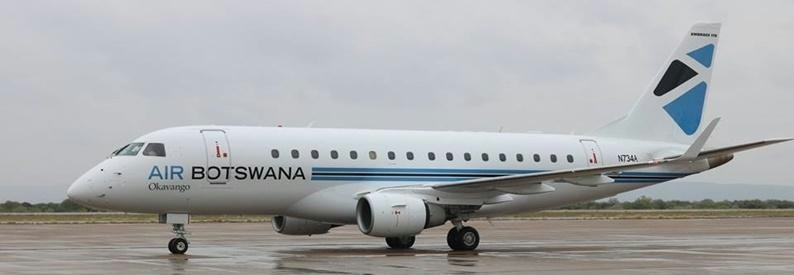
Air Botswana Extends Suspension of General Manager
Air Botswana Extends Suspension of General Manager Amid Investigation
Air Botswana’s newly appointed board has extended the administrative leave of General Manager Lulu Rasebotsa for an additional 30 working days as an internal investigation into alleged mismanagement and operational inefficiencies continues. Rasebotsa, who was initially suspended for 30 days beginning June 30, 2025, remains on leave following the expiration of the original suspension period without a resolution, according to ch-aviation sources.
Challenges in the Investigation Process
The investigation was initiated shortly after the new board took office on June 27. However, the process has encountered significant obstacles. Reports from the Botswana Guardian indicate that the board’s efforts have been hindered by internal barriers, including restricted access to critical information due to company policies requiring legal vetting and management approval. Additionally, some employees have been reluctant to cooperate, possibly because of their involvement in prior decisions or advisory roles to Rasebotsa.
An Air Botswana spokeswoman confirmed the extension of Rasebotsa’s administrative leave but declined to provide further details. Rasebotsa herself has not issued any public statements regarding the ongoing investigation.
Implications for Air Botswana’s Future
This leadership uncertainty arises at a pivotal moment as Air Botswana pursues a comprehensive turnaround strategy under the guidance of the new board. The prolonged suspension of the general manager may present operational challenges, particularly in sustaining staff morale and managing ongoing projects. Industry analysts warn that such instability could invite increased scrutiny from stakeholders and passengers, raising concerns about the airline’s stability and strategic direction.
Competitors may seek to exploit Air Botswana’s internal difficulties by offering more competitive pricing or enhanced services to attract its customer base. Furthermore, the situation could attract regulatory attention, potentially pressuring the airline to address operational shortcomings promptly to restore public confidence and market trust.
The new board is chaired by Dane Kondić, former CEO of Air Serbia and euroAtlantic Airways. Kondić’s appointment has generated controversy due to his simultaneous role as chairman of the management committee at regional rival LAM - Linhas Aéreas de Moçambique. This leadership shake-up, coupled with the ongoing investigation, highlights the significant challenges Air Botswana faces as it strives to stabilize operations and implement its turnaround plan.
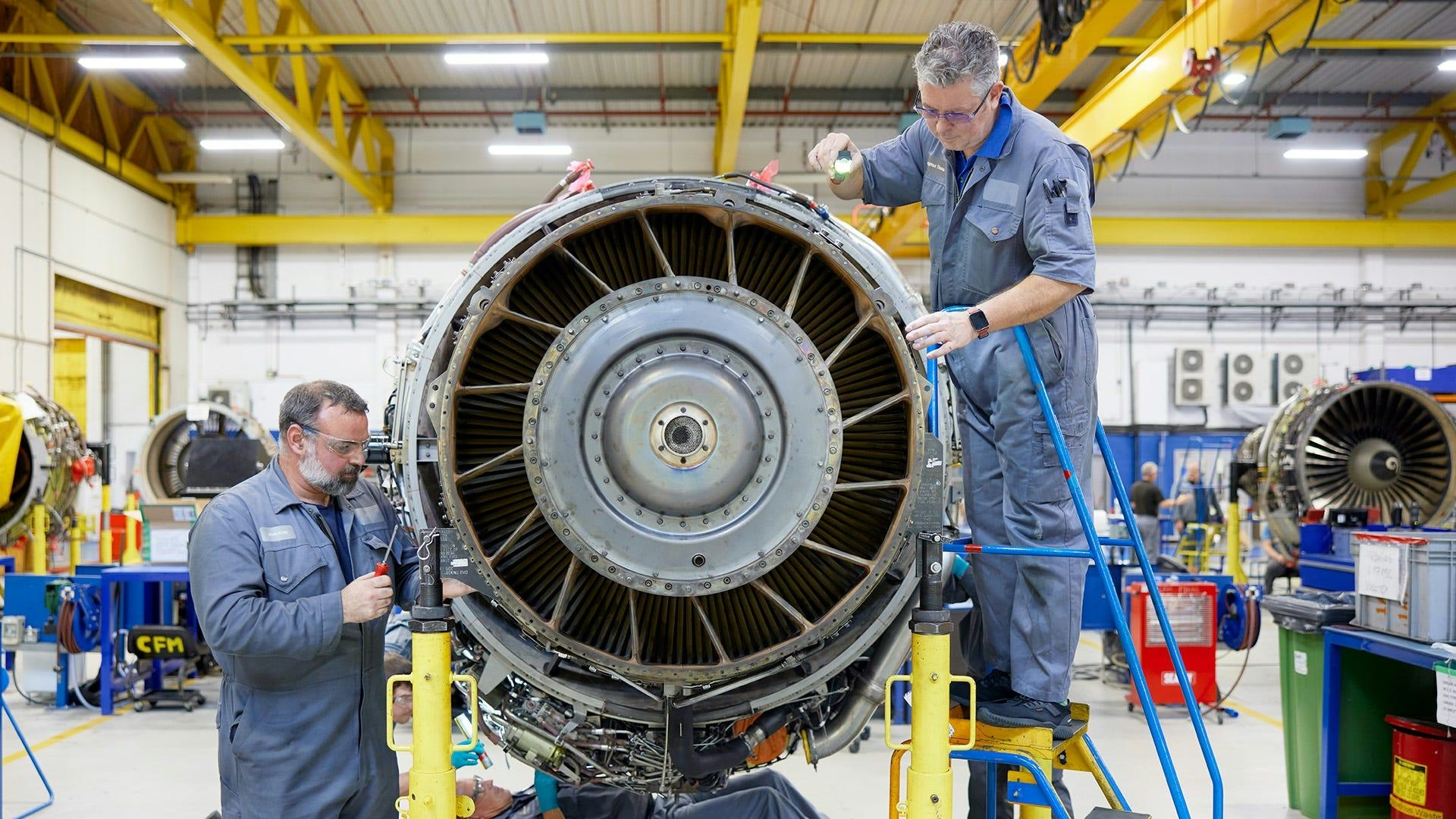
AirAsia Partners with GE Aerospace on Fuel Management Software
AirAsia Partners with GE Aerospace to Enhance Fuel Efficiency
AirAsia has announced a renewed collaboration with GE Aerospace, adopting the company’s Fuel Insight software to improve fuel efficiency across its entire fleet. This partnership represents a significant advancement in AirAsia’s ongoing efforts to optimize operational performance, reduce costs, and further its sustainability objectives.
Deployment of Advanced Fuel Management Technology
Fuel Insight, a component of GE Aerospace’s Software as a Service portfolio, will be implemented across all AirAsia Aviation Group’s Air Operator Certificates (AOCs) in Southeast Asia. The platform utilizes advanced analytics and real-time operational data, enabling AirAsia’s operations team to identify opportunities for enhanced fuel performance, more efficient route planning, and the reduction of unnecessary fuel consumption. These capabilities are anticipated to generate cost savings and improve operational reliability, while supporting the airline’s environmental commitments.
Captain Chester Voo, Deputy Group CEO (Airline Operations) of AirAsia Aviation Group, highlighted the strategic importance of the partnership, stating, “This relationship is a strategic step forward in strengthening how we manage fuel efficiency across the Group. GE Aerospace’s technology enables us to make smarter, data-informed decisions that support both our cost-efficiency and sustainability strategies, helping us operate more efficiently and in turn, offer more competitive fares for our guests.”
Andrew Coleman, General Manager of GE Aerospace’s Software as a Service division, added, “Fuel Insight is all about empowering airlines with the data and tools they need to safely operate more efficiently and more sustainably. AirAsia has been a trailblazer in this regard for over a decade and we are excited to see AirAsia’s ambition to build on this strength and lead our industry to new heights with our technology at the forefront of its sustainability initiatives.”
Challenges and Industry Context
While the partnership is expected to deliver substantial benefits, AirAsia may encounter challenges related to integrating Fuel Insight with its existing systems, managing the transition and associated training costs, and addressing any technical issues during implementation. Market response to the collaboration has been predominantly positive, with investors viewing the move as a forward-looking strategy. Nonetheless, some skepticism remains regarding the immediate impact on operational expenses. Competitors in the industry may respond by upgrading their own fuel management technologies or pursuing similar partnerships to maintain their competitive positioning.
In a related development within the aviation software sector, Vellox Group, a global leader in unified aviation operations software, has acquired ADSoftware (ADS), a French provider specializing in CAMO and maintenance software. This acquisition broadens Vellox’s platform into the maintenance domain, offering a comprehensive solution for operations and airworthiness management. ADS’s flagship ERP product, AIRPACK, will be rebranded under the Vellox name, with all ADS employees joining Vellox to ensure service continuity and accelerate innovation.
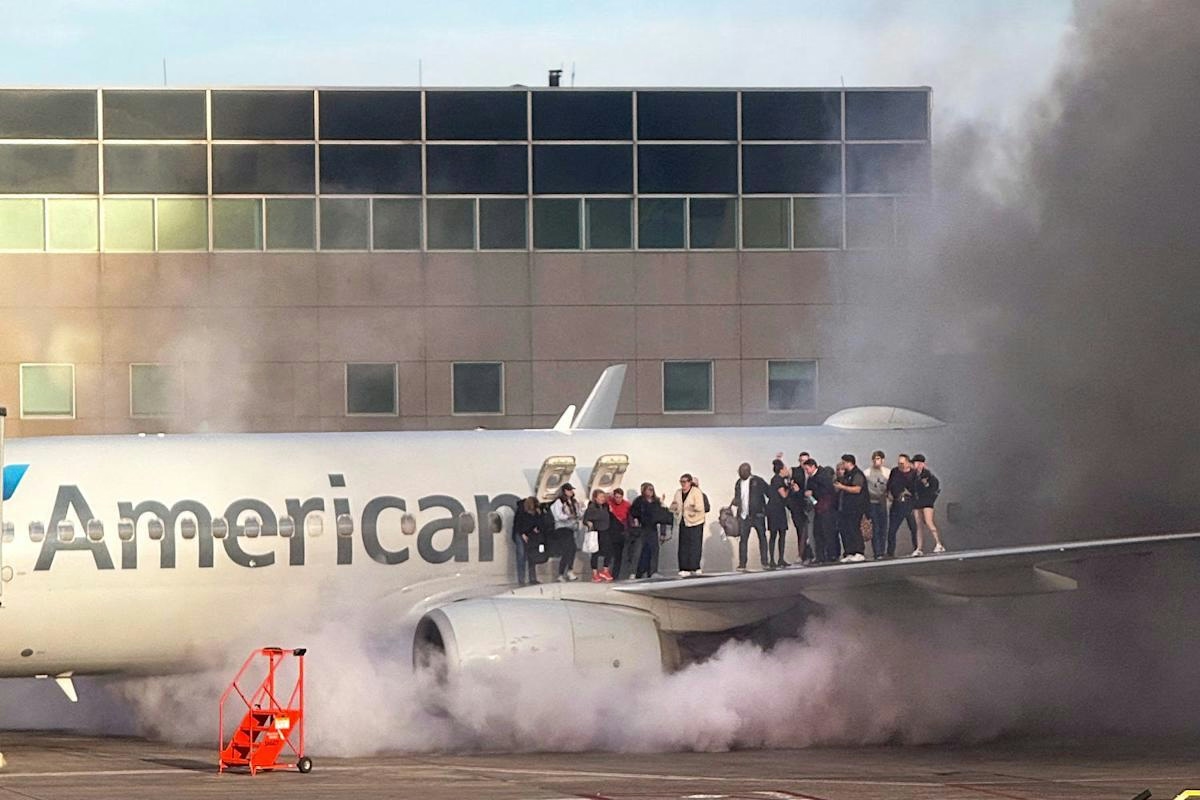
Boeing 757 Engine Catches Fire Mid-Flight, Emergency Landing Strains Local Accommodations
Boeing 757 Engine Fire Forces Emergency Landing in Italy
A Condor Airlines Boeing 757 en route from Corfu, Greece, to Düsseldorf, Germany, experienced a critical engine fire on Saturday, compelling an emergency landing in southern Italy. The incident occurred at approximately 36,000 feet when flames erupted from the aircraft’s right engine, prompting immediate action from the flight crew. All 273 passengers and eight crew members were safely evacuated after the plane diverted to Brindisi Airport. Passengers described the event as terrifying, with one recounting the moment they feared for their lives.
Aftermath and Broader Safety Implications
While the emergency landing ensured the safety of those on board, the situation was exacerbated by logistical challenges on the ground. A shortage of hotel accommodations in Brindisi forced many passengers to spend the night at the airport, highlighting the strain such unexpected diversions place on local infrastructure and resources.
This incident adds to a growing list of concerns surrounding Boeing’s aircraft safety and reliability. Recent reports of engine fires and emergency landings involving Boeing planes have intensified scrutiny from regulators, airlines, and the traveling public. The company’s manufacturing and maintenance practices are under close examination as the aviation industry grapples with these safety questions. Boeing’s stock has experienced volatility amid these developments, while competitors have leveraged the opportunity to promote their own safety records and technological innovations.
As investigations into the engine fire continue, the aviation community remains focused on Boeing’s response and the broader implications for industry standards. For the passengers aboard Flight DE1779, the event underscored the inherent unpredictability of air travel and reinforced the critical importance of stringent safety protocols.
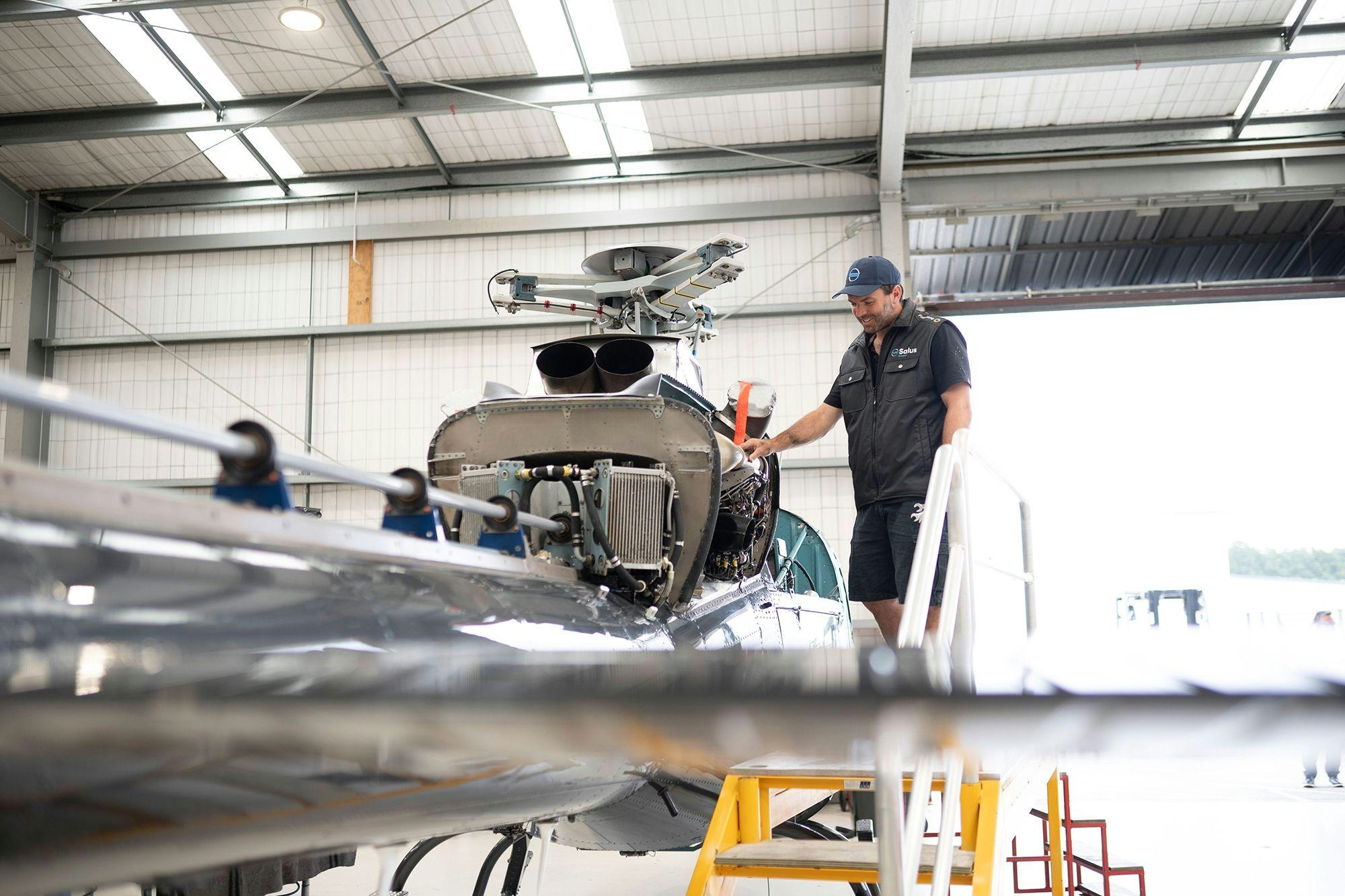
Iranian Technicians Overhaul BK 117 Helicopter Engine
Iranian Technicians Achieve First Domestic Overhaul of BK 117 Helicopter Engine
Iranian technicians have completed the first-ever full overhaul of the BK 117 helicopter engine within the country, marking a significant advancement for Iran’s aviation sector amid ongoing international sanctions. The accomplishment was announced by Hossein Pourfarzaneh, Iran’s civil aviation chief, who emphasized that this milestone reflects years of dedicated and complex work by local experts.
Overcoming Sanctions Through Domestic Expertise
The decision to pursue domestic overhaul capabilities arose after foreign manufacturers, located in countries enforcing sanctions, declined to cooperate and even confiscated engines sent abroad for maintenance. Pourfarzaneh underscored the strategic importance of developing local repair and manufacturing capacities, noting that engines constitute a major portion of an aircraft’s value and that such capabilities are vital to sustaining the national aviation economy.
The BK 117, a medium-sized, twin-engine helicopter produced jointly by Kawasaki Heavy Industries and Airbus Helicopters, is widely utilized for emergency services. The overhaul was conducted by MAPNA, an Iranian engineering firm recognized for its work on advanced technological projects. Iranian technicians faced significant challenges, particularly in sourcing parts and technologies restricted by sanctions. These obstacles compelled engineers to devise innovative solutions and rely heavily on domestic manufacturing, demonstrating both technical resilience and Iran’s commitment to maintaining and expanding its aviation fleet despite external pressures.
Broader Implications for Iran’s Aviation Sector
This development occurs amid cautious market reactions, with some investors expressing concern that Iran’s increasing self-sufficiency in aviation maintenance could disrupt global supply chains further. Additionally, international regulators and competitors may respond with heightened scrutiny of Iranian aviation capabilities, potentially resulting in stricter regulations or expanded embargoes on Iranian aviation products.
Despite these challenges, Iran has sustained its aviation operations and even extended maintenance services to foreign carriers. Notably, last year Russia’s largest airline, Aeroflot, reportedly sent a Western-made jet to Iran for repairs. Furthermore, in late 2024, Iranian authorities announced that domestic experts had mastered the technology to manufacture spare parts for Boeing and Airbus jet engines.
As Iran continues to navigate the complexities imposed by international sanctions, the successful overhaul of the BK 117 engine highlights the technical proficiency of its engineers and underscores the broader economic and geopolitical ramifications for the region’s aviation industry.
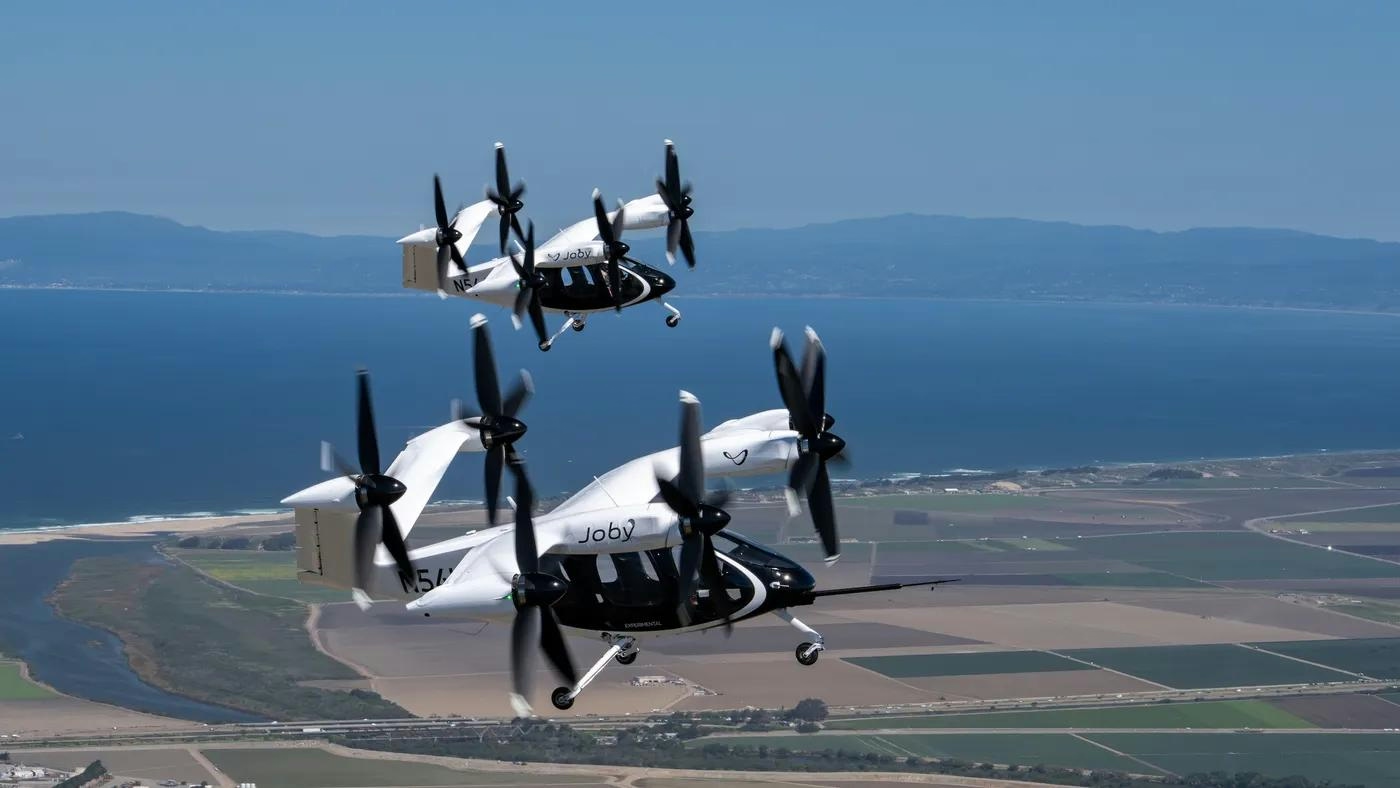
Joby Aims to Accelerate U.S. Flying Taxi Plans with Blade Acquisition
Joby Aims to Accelerate U.S. Flying Taxi Plans with Blade Acquisition
Strategic Acquisition to Expedite Market Entry
After years of regulatory delays, flying taxi startups are adopting new strategies to hasten their entry into the commercial market. Joby Aviation, a leading U.S. flying taxi company, has taken a significant step by acquiring New York-based helicopter operator Blade Air Mobility for $125 million. This acquisition is intended to accelerate Joby’s plans to launch commercial flying taxi services across the United States.
Eric Allison, Joby’s chief product officer, emphasized the importance of Blade’s established business model in the decision to acquire the company. In an interview with Skift, Allison noted that Blade is “at the leading edge” of urban air mobility, effectively utilizing existing technology and aircraft while maximizing operational efficiency. Blade’s expertise and established customer base are expected to provide Joby with a valuable platform to build upon.
Industry Context and Challenges Ahead
Flying taxis, or electric vertical takeoff and landing vehicles (eVTOLs), have attracted substantial investment from major airlines including United and Delta. Joby’s acquisition of Blade is widely viewed as a strategic move to leverage Blade’s infrastructure and operational experience, potentially smoothing the path for Joby’s own eVTOL aircraft once regulatory approval is obtained.
Despite this progress, significant challenges remain. Regulatory clearance for eVTOL aircraft is still pending, and the sector faces intense competition from other developers racing to bring urban air mobility solutions to market. Ensuring the safety and reliability of commercial eVTOL operations will be paramount as companies transition from testing phases to passenger service.
Market Response and Industry Implications
Market reactions to Joby’s acquisition have been largely positive. Investors have expressed confidence in Joby’s approach, seeing the deal as a means to accelerate commercialization and secure a foothold in key urban markets. The acquisition is also prompting competitors to advance their own technologies and services to maintain a competitive edge in the rapidly evolving urban air mobility sector.
As Joby integrates Blade’s operations and prepares for forthcoming regulatory milestones, the company is positioning itself at the forefront of the emerging flying taxi industry, with the goal of making urban air travel a practical reality for U.S. consumers in the near future.
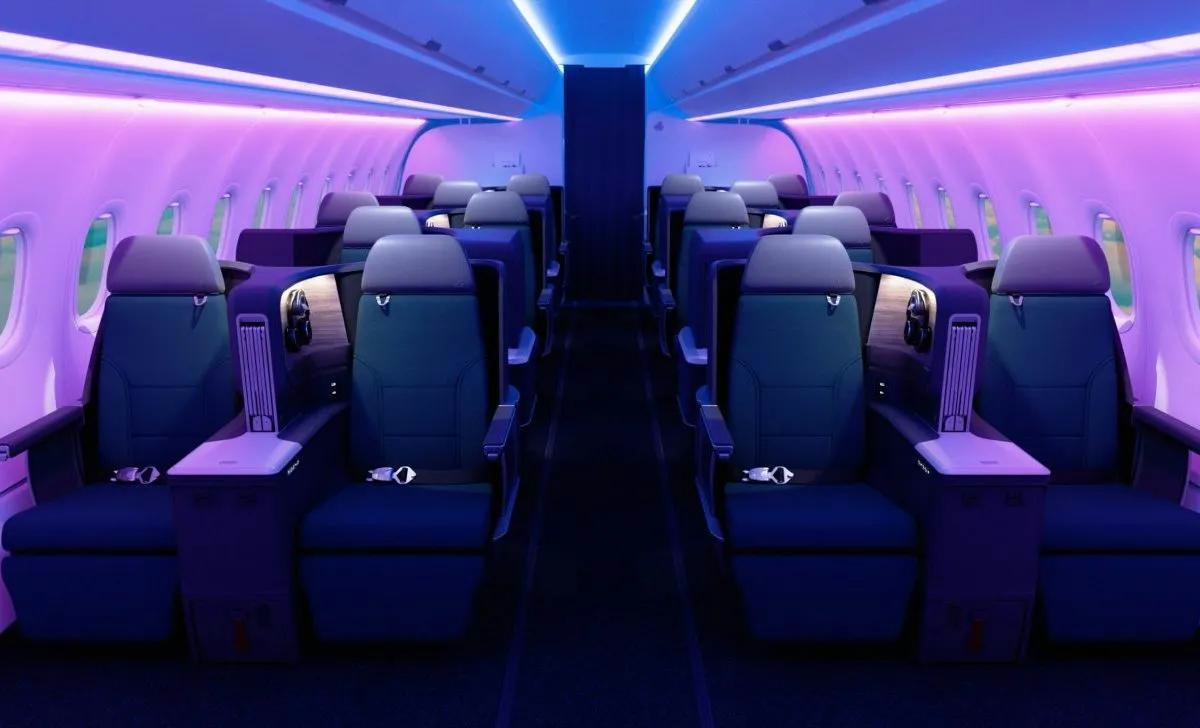
Three Technology Trends Set to Transform Aviation by 2030
Three Technology Trends Set to Transform Aviation by 2030
By 2030, the aviation industry is poised for a profound transformation, with flights increasingly managed by networks of autonomous systems operating in real time alongside human crews. Oleksandr Plyska, vice president of Sigma Software Group, emphasizes that the digital transformation of aviation is accelerating rapidly, with cybersecurity representing only the initial phase. To effectively prepare for the coming decade, industry leaders must prioritize three disruptive technologies: agentic artificial intelligence (AI), digital twins, and autonomous aircraft.
Agentic AI: Advancing Beyond Traditional Automation
Agentic AI represents the next stage in artificial intelligence development, moving well beyond the capabilities of conventional chatbots or copilots. Unlike traditional AI systems that respond solely to user prompts, agentic AI can independently take initiative, interact with external systems, and execute complex workflows without direct human intervention. This technology envisions virtual agents capable of managing multiple tasks simultaneously, such as booking routes, coordinating logistics, and performing diagnostics. Emerging standards like Anthropic’s Model Context Protocol facilitate the creation of modular, interconnected AI applications that communicate seamlessly with one another and with external systems. In the context of aviation, agentic AI could enable copilots to handle a broad spectrum of responsibilities, ranging from in-flight assistance to air traffic coordination.
Digital Twins: Enhancing Efficiency Through Virtual Replication
Digital twins—virtual replicas of aircraft, engines, and even entire airport facilities—are continuously updated with live data, allowing engineers to simulate repairs, predict potential failures, and optimize performance without physical intervention. According to the International Air Transport Association’s (IATA) 2024 report, the implementation of digital twins could reduce maintenance costs by up to 20% by 2030. However, widespread adoption faces significant challenges. Currently, 60% of digital twin projects fail, primarily due to high upfront costs, a figure that has increased from 40% in 2022. Despite these obstacles, the aviation sector remains committed to advancing this technology, drawing lessons from the software industry’s earlier transition to cloud computing and gradually overcoming initial setbacks.
Autonomous Aircraft: Charting the Next Frontier
Automation has already revolutionized critical phases of flight such as takeoff and landing. The forthcoming milestone is the development of fully autonomous commercial and cargo aircraft, powered by real-time data analytics, AI, and sophisticated sensor technologies. Although this technology remains in its nascent stages, progress is accelerating, and public confidence is slowly growing. Regulatory challenges and the complexities of integrating autonomous systems with existing infrastructure continue to pose significant barriers. Nonetheless, momentum within the industry is building steadily toward realizing this vision.
Navigating Challenges and Industry Responses
The integration of these transformative technologies is accompanied by considerable challenges. Regulatory frameworks must evolve to accommodate autonomous systems, while the substantial initial investments required for digital twins and advanced AI may deter some stakeholders. Technical difficulties related to integrating new technologies with legacy infrastructure further complicate adoption. Despite these hurdles, the market is responding proactively. Companies such as Beyond Gravity in Switzerland are intensifying research and development efforts, while competitors accelerate innovation and forge strategic partnerships. Regulatory bodies like the Federal Aviation Administration (FAA) have also signaled a commitment to modernization, exemplified by initiatives such as the roadmap toward lead-free aviation gasoline (Avgas) by 2030.
Preparing for the Future of Aviation
Industry leaders are encouraged to invest in robust AI systems that extend beyond superficial applications, focusing on agentic AI capable of delivering tangible operational improvements. The adoption of digital twins should be approached with a long-term perspective, emphasizing targeted implementations that demonstrate clear value and justify associated costs. Additionally, upskilling the workforce will be critical, as automation reshapes—not eliminates—the roles of pilots, mechanics, and ground personnel.
As these technological trends converge, the aviation industry stands on the threshold of a new era characterized by smarter systems, enhanced safety, and unprecedented operational efficiency.

Global Analysis of Airline Crisis Management Software Market
Global Analysis of Airline Crisis Management Software Market
The global airline crisis management software market is anticipated to witness significant growth over the next decade, with its value projected to increase from USD 3.4 billion in 2025 to USD 6.0 billion by 2035. This growth corresponds to a compound annual growth rate (CAGR) of 6.0%, driven by the aviation sector’s growing dependence on advanced digital solutions aimed at enhancing operational resilience and improving crisis response capabilities.
Market Growth and Drivers
Between 2025 and 2030, the market is expected to expand from USD 3.4 billion to USD 4.5 billion, reflecting a CAGR of 5.8%. This initial phase of growth is fueled by rising passenger volumes, increasingly stringent regulatory requirements, and the demand for more robust operational systems. Airlines are prioritizing software solutions that facilitate real-time decision-making, ensure regulatory compliance, and enable effective incident management to safeguard passenger safety and maintain trust.
From 2030 to 2035, the market is projected to accelerate further, reaching USD 6.0 billion with a CAGR of 6.6%. This period will be marked by the widespread adoption of digital and cloud-based crisis management platforms as airlines face more complex challenges, including global disruptions, cybersecurity threats, and climate-related events. Cloud-native solutions, expected to constitute 63% of the market by 2025, provide scalable deployment, rapid updates, and global accessibility—critical advantages for airlines operating across diverse regions.
The increasing frequency of operational disruptions and evolving aviation safety regulations are compelling airlines to invest in sophisticated crisis management tools. The integration of data analytics and artificial intelligence (AI) enhances response accuracy and optimizes resource allocation, enabling airlines to minimize downtime and protect their reputations. Furthermore, cloud-based platforms facilitate faster, more flexible deployment and support for global operations, establishing them as the dominant segment within the market.
Regional and Competitive Landscape
Key growth regions include North America, Asia-Pacific, and Europe, reflecting robust airline activity and a strong regulatory emphasis on crisis preparedness. Prominent industry players shaping the market landscape comprise Amadeus IT Group, Collins Aerospace (Raytheon Technologies), General Electric Aviation, Hexagon AB, Honeywell Aerospace, IBM, Microsoft, Rockwell Collins, Sabre Corporation, and SITA.
Challenges and Market Dynamics
Despite the optimistic outlook, the market faces several challenges. The increasing reliance on digital platforms heightens the importance of robust cybersecurity measures to protect sensitive operational data. Additionally, integrating new crisis management software with existing airline systems presents complexity and demands significant resources. Airlines must also navigate a multifaceted regulatory environment, necessitating adaptable and compliant software solutions.
In response to these challenges, market participants are expected to escalate investments in advanced technologies and establish strategic partnerships with software providers. Competition is likely to intensify, with companies differentiating their offerings through enhanced features, competitive pricing, and superior customer support.
Outlook
As air travel continues to recover and operational resilience remains a critical priority, the airline crisis management software market is positioned for steady expansion. The ongoing integration of AI, analytics, and cloud technologies will continue to influence the competitive landscape, while persistent challenges related to cybersecurity and regulatory compliance will drive further innovation and investment.
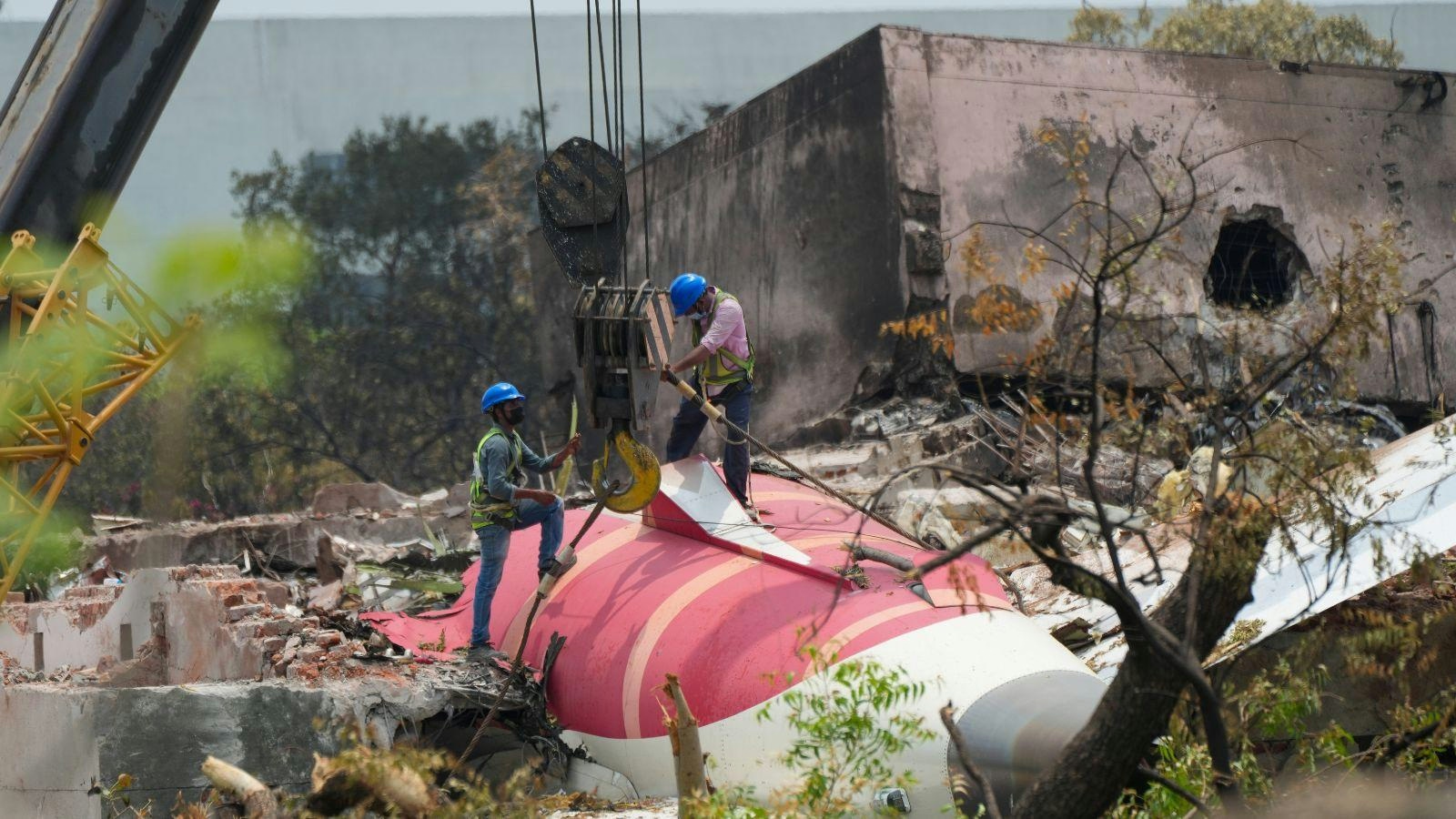
MPs Call for DGCA Autonomy and Improved Aviation Safety After AI 171 Crash
MPs Call for DGCA Autonomy and Improved Aviation Safety After AI 171 Crash
In the aftermath of the Air India 171 crash and a revealing audit that exposed widespread safety violations, a parliamentary panel has urged comprehensive reforms to strengthen aviation safety and regulatory oversight in India. The committee’s report, presented to both houses of Parliament on Wednesday, identifies twelve critical issues, emphasizing the urgent need to grant full financial and administrative autonomy to the Directorate General of Civil Aviation (DGCA).
Regulatory Challenges and Staffing Shortages
The parliamentary standing committee on transport, tourism, and culture, chaired by JDU MP Sanjay Kumar Jha, highlighted that the DGCA’s limited autonomy and significant technical staff shortages—nearly 55% of technical positions remain unfilled—are severely hampering its capacity to enforce safety standards effectively. The report follows a DGCA audit that uncovered 263 safety violations across eight commercial airlines, including 51 at Air India alone, with 44 classified as Level 2 and seven as Level 1 infractions. These findings have intensified concerns regarding the regulatory body's effectiveness and the aviation sector’s ability to keep pace with rapid expansion.
The panel stressed that the current recruitment framework is inadequate, noting that the aviation ministry has yet to consider allowing the DGCA to conduct direct recruitment. Granting the DGCA full autonomy in a time-bound manner is seen as essential to addressing chronic staffing deficits and attracting skilled professionals through competitive remuneration.
Addressing Fatigue and Training Deficiencies
The committee also called for stringent enforcement of updated flight duty time limitation (FDTL) regulations for pilots and the immediate establishment of a national fatigue risk management system (FRMS) for air traffic controllers (ATCOs). Both groups have long reported fatigue due to insufficient rest periods and irregular scheduling, which pose ongoing risks to airspace safety.
Furthermore, the report highlighted a critical mismatch between recruitment and training capacities, particularly for technical roles such as aircraft maintenance engineers. While the Airports Authority of India (AAI) has recently created 1,636 additional ATCO positions, significant staffing gaps persist, threatening the sector’s sustainable growth.
Strengthening Enforcement and Oversight
The parliamentary panel urged the closure of all identified safety deficiencies within specified deadlines and recommended the implementation of stronger enforcement measures, including financial penalties for non-compliance. The report criticized the DGCA’s audit quality, attributing shortcomings to a lack of qualified personnel and airlines prioritizing profit over maintenance and safety.
In response to a series of helicopter accidents in Uttarakhand, the committee recommended the establishment of a uniform national regulatory framework for all state-operated helicopter services. It also called for mandatory, terrain-specific pilot training, expressing concern over state agencies managing high-risk operations with limited central oversight.
The committee’s findings underscore longstanding issues that have repeatedly been overlooked, now brought into sharp relief by the Air India crash and subsequent audit revelations. With India’s aviation industry expanding rapidly, the panel warned that without urgent reforms—particularly in regulatory autonomy, staffing, and enforcement—the civil aviation sector faces escalating risks to safety and sustainable development.
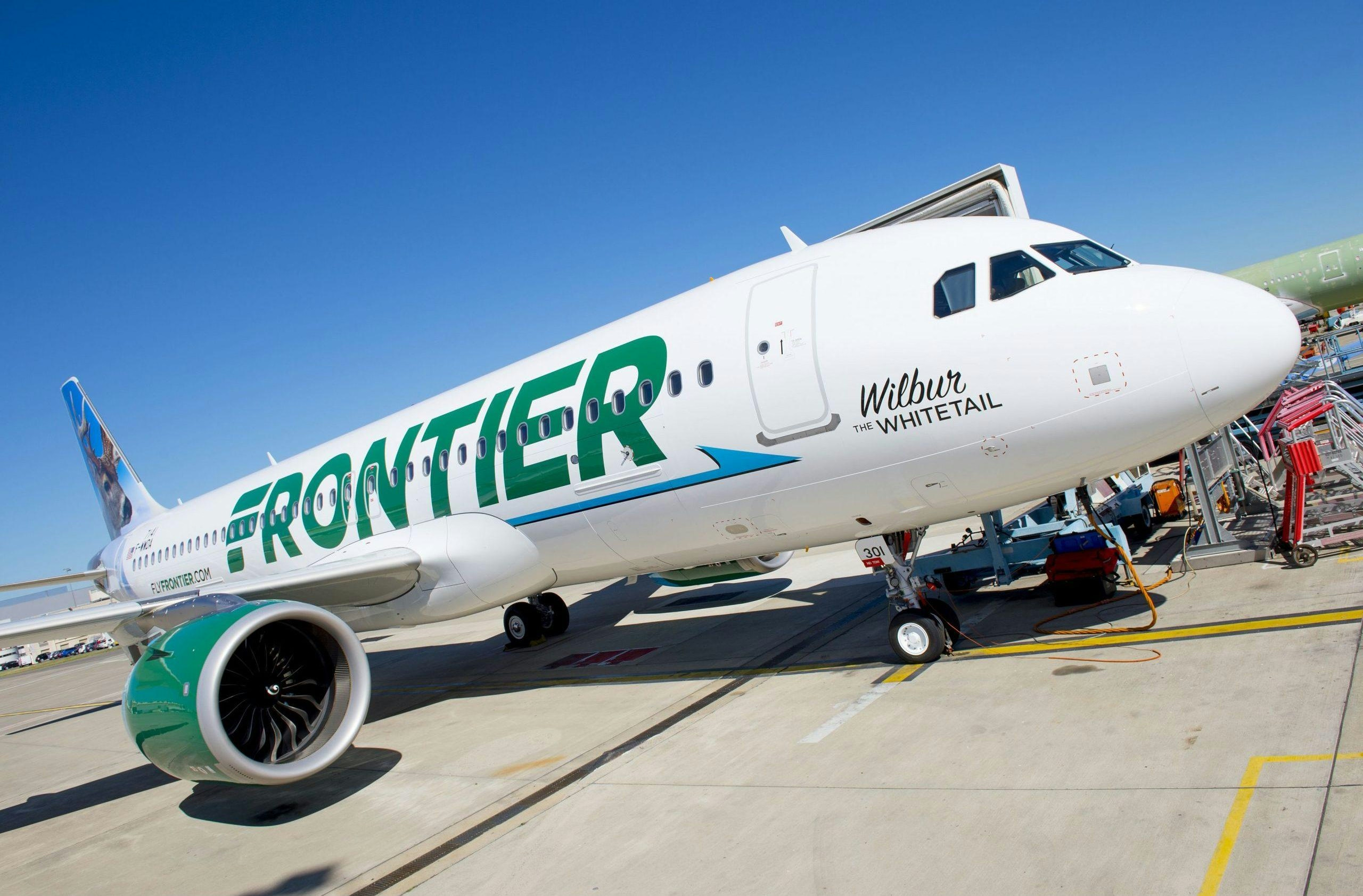
Frontier A320 Engine Damaged by Air Conditioning Tube at Charlotte Airport
Frontier A320 Engine Damaged by Air Conditioning Tube at Charlotte Airport
Incident Overview
On August 16, 2025, a Frontier Airlines Airbus A320 experienced significant engine damage at Charlotte-Douglas International Airport (CLT) when a ground-based air conditioning hose was inadvertently ingested by the aircraft’s left engine. The aircraft, registered as N365FR and approximately 5.7 years old, was parked at its gate with passengers already on board, preparing for Frontier flight 3134 to New York-LaGuardia (LGA). The incident caused a delay of nearly nine hours, affecting all passengers scheduled on the flight.
Eyewitness accounts and passenger videos documented the moment the air conditioning hose was drawn into the spinning fan blades, resulting in the hose’s disintegration and debris scattering across the tarmac. One passenger remarked on the severity of the damage, stating, “That engine’s fried.” Fortunately, no injuries were reported among passengers or crew members.
Ground Equipment and Operational Factors
Ground-based air conditioning units are routinely employed at airports to cool aircraft cabins while engines and auxiliary power units (APUs) are shut down, particularly during hot weather. These units connect to aircraft through large hoses that must be securely stowed when not in use to prevent accidents. Preliminary assessments suggest that improper handling or storage of the hose contributed to its ingestion by the engine in this case.
Following the incident, the flight crew promptly disembarked all passengers as Frontier Airlines conducted an initial assessment. Due to the extent of the engine damage, the affected aircraft was taken out of service for further inspection and repairs. To minimize disruption, Frontier arranged for a replacement aircraft, an Airbus A321neo registered N715FR, to operate the delayed flight. Originally scheduled to depart at 09:55 local time, the replacement flight eventually departed Charlotte at 19:06, according to Flightradar24 data.
Implications and Industry Context
The event has drawn increased scrutiny toward Frontier Airlines’ ground handling and maintenance protocols, raising concerns about operational safety and oversight. With the damaged A320 sidelined, Frontier faces potential ripple effects across its fleet, particularly amid ongoing shortages of Airbus A320 engines that have already affected delivery schedules and operational capacities across the industry.
Market analysts have noted that such operational disruptions could exert temporary pressure on Frontier’s stock price, reflecting investor apprehension regarding reliability and associated costs. Concurrently, competing airlines may seek to leverage the situation by highlighting their own safety records and operational dependability in marketing campaigns.
As investigations continue, this incident underscores the critical importance of stringent ground operations and highlights the broader challenges confronting airlines operating the Airbus A320 family amid persistent engine supply constraints.
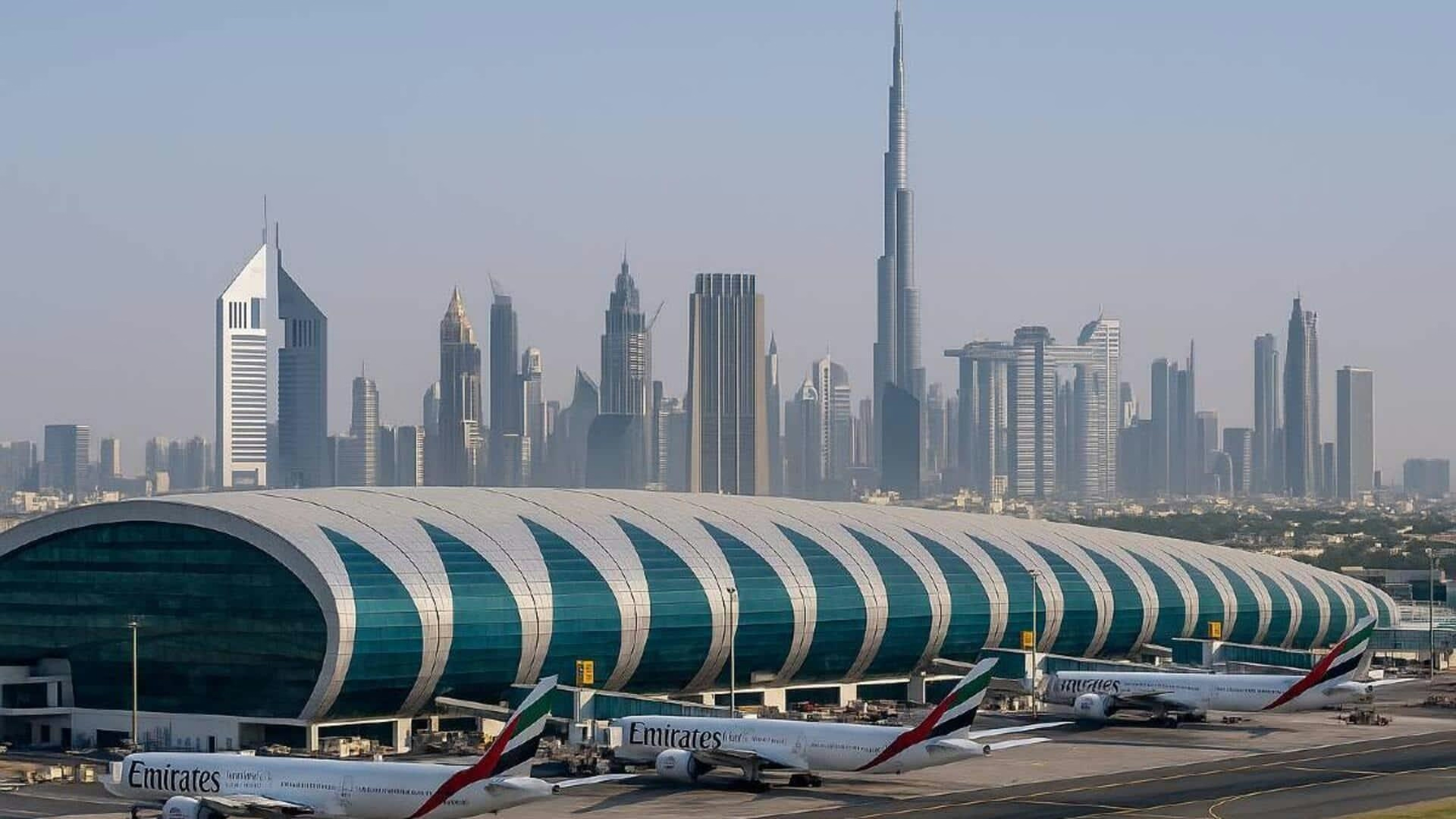
Dubai Airport Introduces AI-Powered Corridor for Faster Immigration Clearance
Dubai Airport Launches AI-Powered Corridor for Expedited Immigration Clearance
Dubai International Airport (DXB), recognized as the world’s busiest hub for international travel, has introduced an innovative AI-powered passenger corridor designed to expedite immigration clearance without the need for physical documents. This development forms a key component of Dubai’s “Travel Without Borders” initiative, marking a significant advancement toward a seamless, passport-free travel experience.
A New Era in Immigration Processing
The newly unveiled corridor allows enrolled passengers to bypass traditional passport counters and boarding pass scans by simply walking through a designated passage. Utilizing advanced facial recognition technology combined with pre-registered biometric data, the system verifies identities in as little as four seconds. It is capable of processing up to ten individuals simultaneously, dramatically reducing wait times. Lieutenant General Mohammed Ahmed Al Marri, Director General of the General Directorate of Residency and Foreigners Affairs (GDRFA-Dubai), highlighted that this innovation eliminates the need for conventional passport checks, smart gates, or physical inspections.
The AI system operates by pre-checking passenger data prior to arrival at the corridor, continuously cross-referencing biometric records to authenticate identities in real time. Any irregularities or suspicious cases are immediately flagged for expert review, ensuring that security remains uncompromised while minimizing delays. Initially, this technology is available in Terminal 3’s First and Business Class lounges, with plans for broader implementation under Dubai’s “Unlimited Smart Travel” program.
Building on Previous Innovations and Addressing Challenges
This initiative builds upon DXB’s earlier introduction of a “smart tunnel” in 2020, which allowed passengers to pass through a biometric scanning zone as an alternative to traditional counters. The new AI-powered corridor aims to further reduce bottlenecks and transform the travel experience by embedding identity verification seamlessly into the passenger journey.
Despite its promise, the rollout of such advanced technology presents several challenges. The initial costs of implementation, integration with existing airport infrastructure, and ensuring the accuracy and reliability of AI-driven checks are significant considerations. Additionally, concerns regarding data privacy and the management of sensitive biometric information have been raised, with some industry observers expressing skepticism about the extent of efficiency gains.
The introduction of this technology at DXB is expected to influence competing airports, potentially accelerating their adoption of AI solutions or prompting enhancements to existing immigration processes to maintain competitiveness in passenger satisfaction. This trend reflects a broader global movement toward integrating artificial intelligence across various sectors, from agriculture certification to financial trading.
For Dubai International Airport, which handles over 80 million passengers annually and has held the title of the world’s busiest international airport for 11 consecutive years, the AI-powered corridor represents both a technological milestone and a strategic step toward a future characterized by faster, more secure, and increasingly frictionless international travel.

Jordan Airmotive Signs MRO Agreement for CFM56-7B Engines with Texel Air
Jordan Airmotive Signs MRO Agreement for CFM56-7B Engines with Texel Air
Strategic Partnership to Enhance Engine Maintenance Services
Jordan Airmotive has entered into a long-term general terms agreement (GTA) with Texel Air, a Bahrain-based ACMI and charter cargo airline that also operates as a certified airframe maintenance, repair, and overhaul (MRO) provider. Under this new partnership, Jordan Airmotive will deliver comprehensive MRO services for Texel Air’s fleet of CFM56-7B engines. The collaboration aims to improve the reliability and operational efficiency of the carrier’s aircraft, reinforcing Jordan Airmotive’s position within the Middle East aviation sector.
This agreement represents a strategic expansion for Jordan Airmotive, particularly among regional cargo and charter operators. By customizing MRO programmes to address the specific demands of these sectors—where operational uptime, cost management, and flexibility are paramount—the company seeks to solidify its reputation as a trusted partner in a highly competitive market.
Industry Challenges and Market Dynamics
The deal comes at a time when the aviation maintenance industry faces significant challenges. Rising costs associated with shop visits, driven by increases in labor, materials, and original equipment manufacturer (OEM) parts, are rendering engine overhauls for mature platforms like the CFM56-7B progressively less cost-effective. This economic pressure is prompting operators and MRO providers alike to reconsider the viability of extensive engine repairs, exploring alternatives such as sourcing used serviceable materials or evaluating the return-to-service potential of other engine models, including the CFM56-5A.
The MRO market is currently experiencing record-high profitability, which is intensifying competition among service providers. Industry players are expected to respond by strengthening partnerships with suppliers of used serviceable materials and adopting more structured assessment methodologies to optimize engine maintenance strategies. These evolving dynamics are likely to heighten competition as MRO providers navigate shifting regional demand and constrained supply chains.
Jordan Airmotive’s Capabilities and Future Outlook
Jordan Airmotive holds certifications from leading aviation authorities, including the European Union Aviation Safety Agency (EASA) and the Federal Aviation Administration (FAA), positioning it well to meet these industry challenges. The company offers an extensive portfolio of repair and overhaul services covering engines such as the CF6-80C2, CFM56-7B, CFM56-5B, and CFM56-3. Furthermore, Jordan Airmotive is preparing to expand its capabilities to include next-generation engine platforms, with upcoming services for the LEAP-1A and LEAP-1B engines.
By leveraging its internationally recognized certifications and technical expertise, Jordan Airmotive aims to maintain its status as a preferred MRO partner for airlines, lessors, and operators worldwide. The agreement with Texel Air not only underscores the company’s strength in servicing the CFM56-7B engine segment but also highlights its adaptability in addressing the evolving demands of the global MRO landscape.

Airline Uses AI to Reduce Flight Delays
British Airways Harnesses AI to Enhance Flight Punctuality
British Airways has reported a marked improvement in flight punctuality at its Heathrow hub, attributing this progress to a £100 million investment in artificial intelligence and digital technologies. In April, two-thirds of the airline’s departures from the west London airport left ahead of schedule, representing more than double the rate recorded in April 2023 and nearly 20 percent higher than in April 2024.
Technological Innovations Driving Operational Efficiency
The airline credits its success to the integration of AI, forecasting, optimisation, and machine learning into its operational framework. These technologies have facilitated the creation of digital tools and applications designed to streamline processes and bolster resilience. One such AI-driven system enables staff to assign arriving aircraft to stands based on real-time analysis of passengers’ onward travel plans, significantly reducing the risk of missed connections. British Airways estimates that this innovation has saved approximately 160,000 minutes of delays. Another system proactively reroutes aircraft to circumvent adverse weather conditions, preventing an estimated 243,000 minutes of delay.
During the first quarter of the year, 86 percent of British Airways flights from Heathrow departed on time, marking the airline’s best performance on record and a substantial improvement from 46 percent in 2008.
Leadership Perspective and Industry Challenges
Chief Executive Sean Doyle, speaking at an innovation summit in Pittsburgh, underscored the critical importance of operational performance. He stated, “Improving operational performance is a key part of our investment programme because we know the impact delays and disruption can have on our customers. Whilst disruption to our flights is often outside of our control, our focus has been on improving the factors we can directly influence and putting in place the best possible solutions for our customers when it does happen.”
Despite these advancements, the integration of sophisticated AI systems into airline operations presents significant challenges. British Airways and other carriers must carefully navigate the complexities of merging new technologies with existing air traffic control infrastructure, while maintaining stringent standards for data privacy and security. The high costs associated with implementation, alongside the necessity for extensive testing and compliance with rigorous aviation safety regulations, remain considerable hurdles.
Broader Implications for the Aviation Sector
The airline industry is closely monitoring British Airways’ progress, with market analysts anticipating heightened investor interest in AI-driven aviation solutions. Competitors are expected to respond by adopting similar technologies or forming partnerships with AI startups to enhance their operational capabilities. Concurrently, regulatory bodies are likely to increase scrutiny as they evaluate the safety and reliability of AI applications within critical transport infrastructure.
As British Airways continues to advance its digital innovation agenda, the wider aviation sector confronts both promising opportunities and significant challenges in leveraging artificial intelligence to improve efficiency and reduce flight delays.
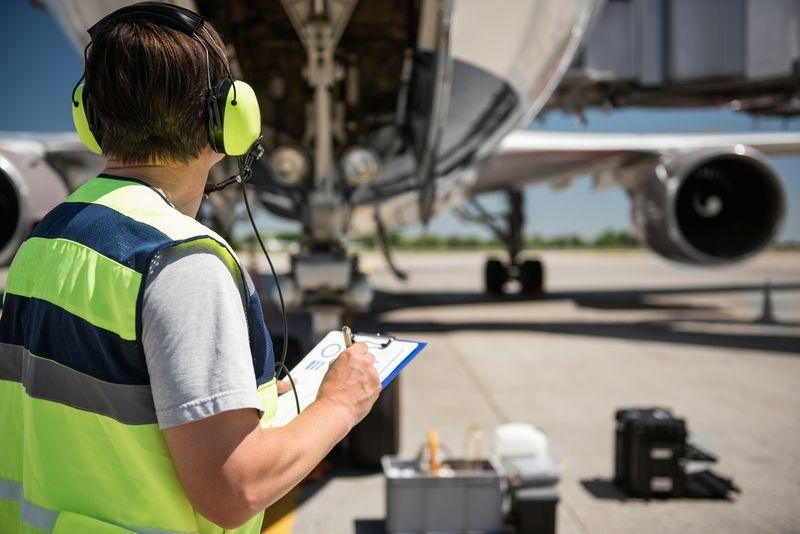
Parliamentary Panel Warns 85% of Aircraft Maintenance Is Outsourced Abroad, Raising Security Concerns
Parliamentary Panel Highlights Risks of Outsourcing Majority of Aircraft Maintenance Abroad
India’s civil aviation sector is confronting significant strategic and economic vulnerabilities due to its extensive dependence on foreign maintenance services, according to a recent report by a Parliamentary panel. The Department-Related Parliamentary Standing Committee on Transport, Tourism and Culture, chaired by JD(U) MP Sanjay Kumar Jha, disclosed that nearly 85% of Maintenance, Repair, and Overhaul (MRO) activities for Indian aircraft are carried out overseas at centres certified by Original Equipment Manufacturers (OEMs).
Strategic and Economic Implications of Outsourcing
The committee characterized this heavy reliance on foreign MRO services as a “national issue,” emphasizing that the practice transcends mere cost considerations and poses serious challenges to India’s self-reliance and security. Despite the existence of domestic MRO providers, Indian airlines predominantly send aircraft abroad for heavy maintenance and major component overhauls. This trend has led to underutilisation of local facilities, increased operational costs, and extended turnaround times, thereby affecting overall fleet efficiency.
Several factors contribute to this dependence on foreign hubs. Indian operators face a challenging environment marked by high taxes on imported spare parts, cumbersome customs procedures, inadequate infrastructure, and delays in securing international certifications. These obstacles are further exacerbated by a shortage of skilled technical personnel, a gap highlighted by the Directorate General of Civil Aviation’s (DGCA) ongoing efforts to fill nearly 55% of vacant technical positions.
The economic fallout is considerable. The report warns of a persistent outflow of foreign exchange that could otherwise be retained and reinvested domestically. Operationally, longer maintenance durations reduce aircraft availability, impacting airline productivity. From a strategic standpoint, reliance on foreign MRO services exposes India to potential disruptions amid geopolitical tensions or supply chain interruptions.
Challenges and Recommendations for Building Domestic Capacity
Beyond economic and strategic concerns, the committee underscored the detrimental effect of outsourcing on the development of a high-skilled, technologically advanced domestic MRO industry. The report asserts that establishing a robust local MRO sector is essential not only for import substitution but also as a cornerstone of national aviation self-reliance and security.
While the government has introduced measures such as reducing the Goods and Services Tax (GST) on MRO services from 18% to 5%, eliminating royalties for land allotments at Airports Authority of India (AAI) airports, and easing customs duties on toolkits, the panel found these steps insufficient. Persistent challenges—including taxation burdens, certification delays, and a lack of incentives for large-scale investment—continue to impede sector growth.
The committee cautioned that India risks forfeiting a “golden opportunity” to emerge as a regional MRO hub, despite advantages like a sizeable domestic fleet, strategic geographic location, and comparatively lower labour costs. It recommended a comprehensive policy overhaul encompassing tax rationalisation on imported aircraft parts, streamlined certification processes, and targeted fiscal and infrastructural incentives to attract investment.
Amid escalating security concerns, the report is expected to trigger closer scrutiny of outsourcing practices and potentially lead to stricter regulatory frameworks. Industry stakeholders may respond by investing in domestic training initiatives and forging partnerships to address labour shortages and enhance regulatory compliance, aiming to cultivate a more resilient and self-sufficient aviation maintenance ecosystem.
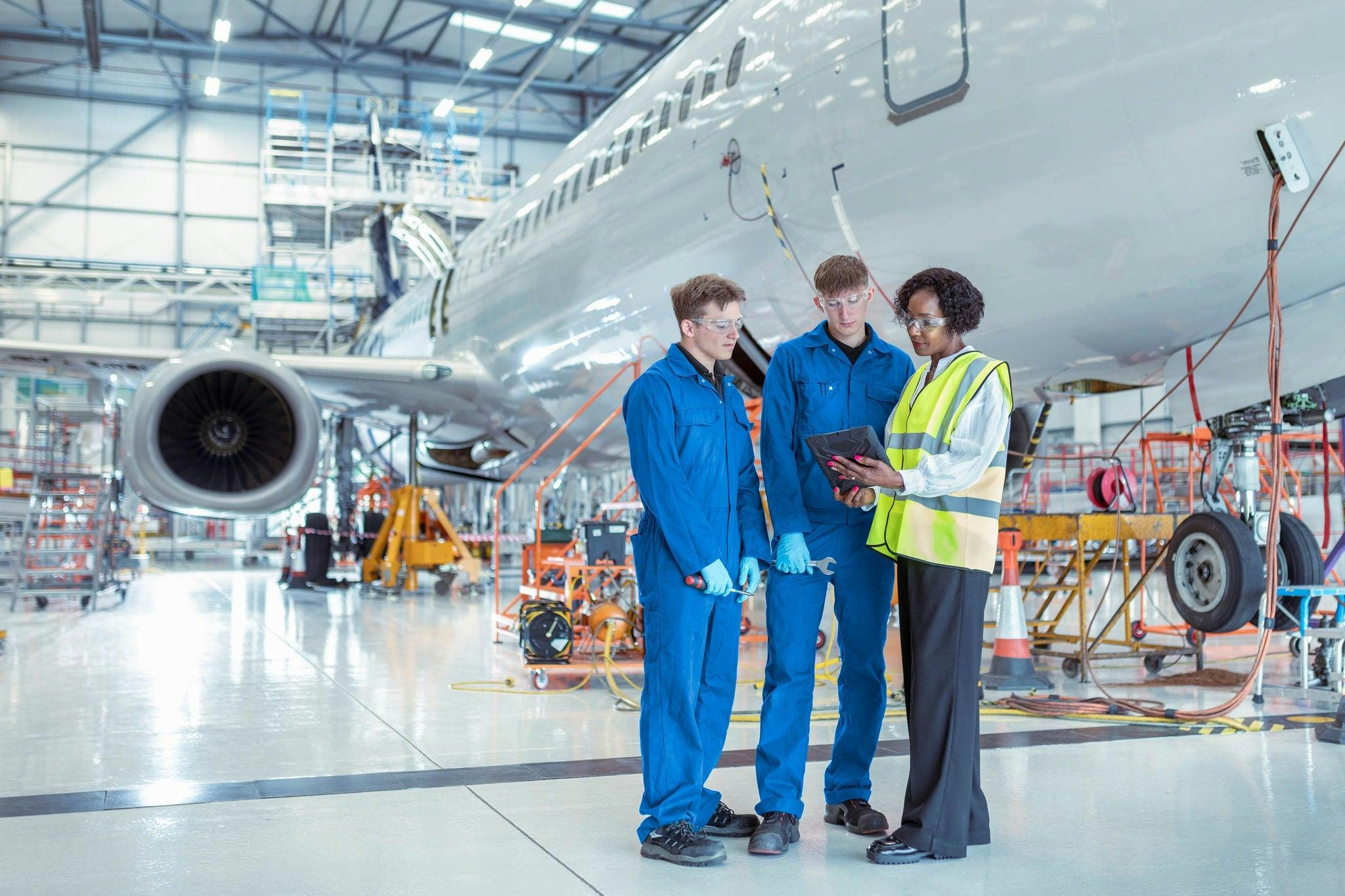
Key Aviation Challenges for 2025: Cybersecurity, Supply Chain, and Sustainability
Key Aviation Challenges for 2025: Cybersecurity, Supply Chain, and Sustainability
The aviation industry continues to serve as a vital pillar of global connectivity, supporting approximately 86.5 million jobs worldwide, according to the report *Aviation: Benefits Beyond Borders*. In 2023, the sector was valued at $762.8 billion, reflecting its significant economic impact. However, as the industry recovers from recent disruptions, it confronts a complex array of challenges that threaten its stability and growth. Among the most pressing are escalating cybersecurity threats, ongoing supply chain disruptions, and the imperative to advance sustainability initiatives.
Escalating Cybersecurity Threats
Cybersecurity has emerged as the foremost risk facing aviation in 2025. The increasing digitization of airlines, airports, and air traffic management systems has expanded the sector’s vulnerability to cyberattacks. According to the Allianz Risk Barometer (2025), 38% of industry respondents now identify cyber loss as their primary concern, surpassing all other risks.
Recent incidents highlight the severity of these threats. Between 2023 and 2025, the Indian government reported over 465 cases of GPS spoofing and interference, affecting both surveillance and commercial flights and raising serious questions about navigation safety. In August 2024, a ransomware attack by the Rhysida group disrupted operations at Seattle-Tacoma International Airport, halting check-in and ticketing services for several days. Boeing also fell victim to a LockBit ransomware attack in 2023, which resulted in the leak of sensitive data after a $200 million ransom demand was refused.
The spectrum of cyber threats includes manipulation of avionics systems, GPS spoofing, breaches of passenger data, hacking of airline reservation platforms, and malware infiltrations targeting airport IT infrastructure. The recent grounding of Alaska Airlines due to a suspected technological failure further underscores the sector’s susceptibility. To mitigate these risks, aviation stakeholders must adopt comprehensive cybersecurity frameworks, invest in real-time threat detection technologies, and strengthen collaboration with international cyber defense alliances.
Supply Chain Disruptions and Aging Fleets
Supply chain challenges continue to impede aircraft deliveries and fleet modernization efforts. As of May 2025, Airbus reported a backlog of 8,617 aircraft orders, with nearly 89% concentrated in its A220 and A320neo models. Boeing faced 6,528 unfilled orders, 74.4% of which were for its 737 MAX jets. These delays have compelled airlines to operate older, less fuel-efficient aircraft, as the International Air Transport Association’s (IATA) 2025 forecast anticipates just over 1,600 new aircraft deliveries—significantly below global demand.
The aviation sector’s supply chain difficulties reflect broader industrial challenges, such as those experienced by Hyundai in its pursuit of net-zero emissions by 2045, hindered by logistical constraints. Low-cost and regional carriers are particularly vulnerable, often lacking the financial capacity to expedite fleet renewal. Geopolitical tensions have further exacerbated the situation, especially for European airlines, which have suffered profit declines due to restricted airspace and extended flight routes.
Sustainability: Progress and Investment Gaps
Sustainability remains a central concern for the aviation industry, yet progress toward greener operations is uneven. While there is growing momentum to reduce emissions and implement environmentally friendly technologies, investment shortfalls continue to limit widespread adoption. A recent DHL Express survey on shipping sustainability reveals a persistent gap between corporate ambitions and practical implementation, with many companies citing cost and infrastructure challenges as significant barriers.
As the aviation sector advances into 2025, addressing the intertwined challenges of cybersecurity, supply chain resilience, and sustainability will be critical to securing its future and maintaining its role in global connectivity.
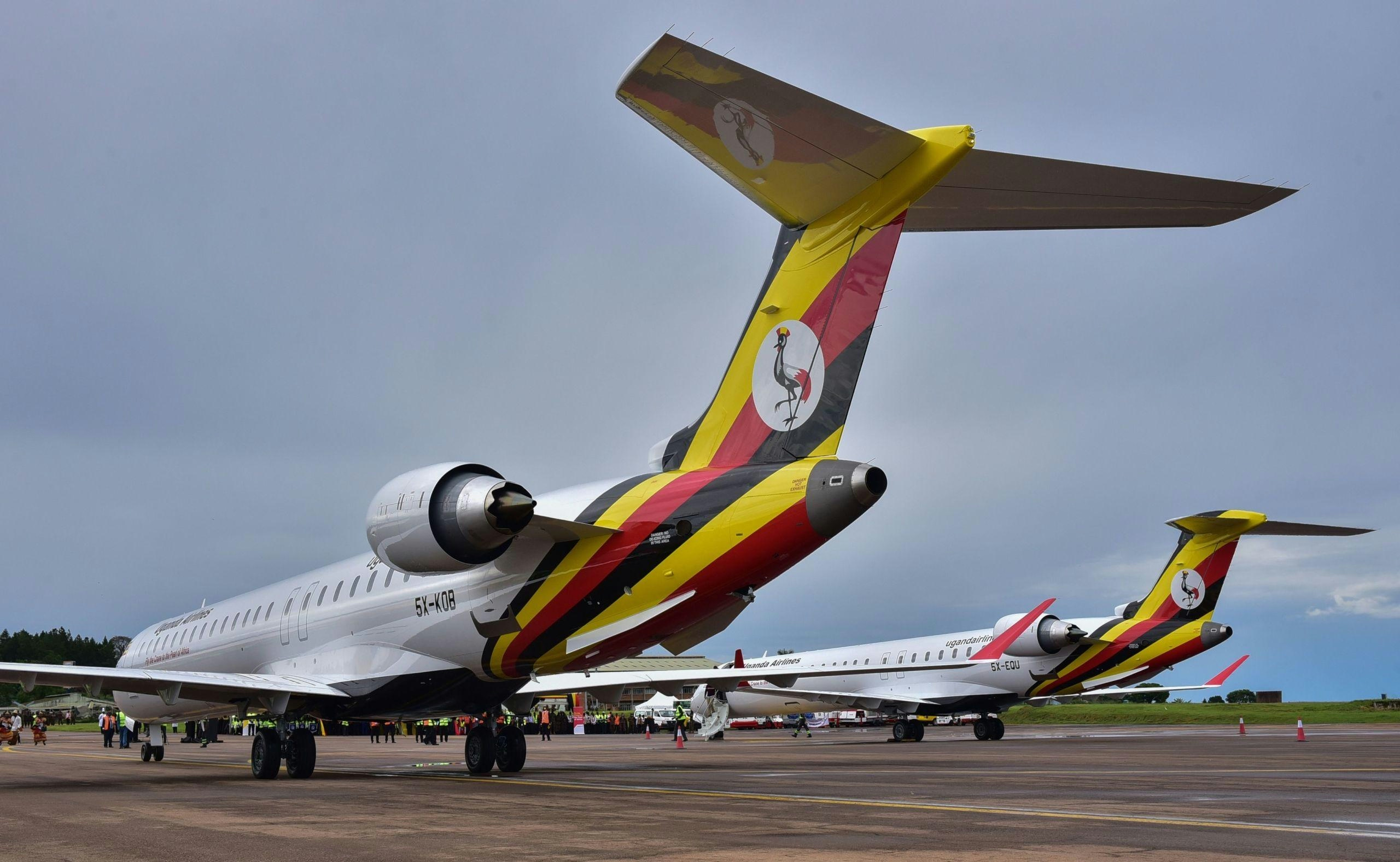
Uganda Airlines Faces Scrutiny Over Losses and CRJ900 Fleet
Uganda Airlines Faces Scrutiny Over Losses and CRJ900 Fleet
Uganda Airlines is confronting intense scrutiny following the Auditor General’s report, which revealed losses exceeding UGX237.85 billion (approximately USD66.8 million) for the 2023/24 financial year. The national carrier’s management appeared before Parliament’s Committee on Commissions, Statutory Authorities, and State Enterprises (COSASE) on August 14 to address concerns regarding persistent financial difficulties and the continued reliance on its ageing Bombardier CRJ900LR fleet.
Financial Challenges and Fleet Concerns
Chief Executive Officer Jenifer Bamuturaki attributed the airline’s losses to several factors, including high fuel prices, currency depreciation, increased crew allowances, and the costly maintenance and spare parts required for the four CRJ900LR regional jets. Lawmakers questioned the initial decision to acquire these aircraft, summoning former executives—among them ex-CEO Ephraim Bagenda and members of the procurement team—to justify the rationale behind the fleet choice. The committee emphasized its constitutional mandate to hold previous officials accountable for decisions that have adversely affected the airline’s performance.
The airline’s ongoing financial struggles have raised alarm among investors and market analysts, who warn that continued losses could undermine confidence and intensify pressure on management to enhance operational efficiency. Competitors may exploit Uganda Airlines’ vulnerabilities by offering more competitive services and pricing, potentially eroding the national carrier’s market share. Additionally, the heavy dependence on the CRJ900 fleet has attracted regulatory and operational scrutiny, with lawmakers advocating for strategic adjustments to secure the airline’s future viability.
Parliamentary Criticism and Management Response
Parliamentarians further criticized Uganda Airlines for failing to pay government dividends for two consecutive years, its heavy reliance on passenger and cargo revenue, and a rising number of lawsuits related to delayed cargo and lost baggage. In response, management highlighted that the airline’s debt remains below the critical 50% equity threshold and noted that the 2024 loss represented a 25.6% improvement compared to the previous year’s UGX324.94 billion (USD91.2 million) deficit. Bamuturaki stated that the airline is actively renegotiating contracts to reduce costs and eliminate unfavorable terms.
COSASE chairman Medard Lubega Sseggona described the losses as “a matter of grave concern” and instructed Bamuturaki to address allegations of ticket tampering and fare manipulation. Transport Minister Edward Katumba Wamala informed the committee that collusion between staff and affiliated travel agencies had resulted in estimated losses of UGX179 billion (USD50.2 million) from price manipulation and UGX140 billion (USD39.3 million) from fare tampering. The committee mandated that management submit a written response by August 18, including findings from a South African consultancy investigating the airline’s revenue challenges.
Future Plans and Fleet Expansion
Looking ahead, Bamuturaki announced plans to launch domestic flights in the 2026/27 financial year, aiming to enhance internal connectivity and alleviate pressure on Uganda’s road infrastructure. Currently serving 23 international destinations—including a recently inaugurated route to London Gatwick—Uganda Airlines intends to utilize the country’s 47 airstrips to support these domestic services. The airline operates four CRJ900LRs and two A330-800Ns and is finalizing an order with Airbus for two A320-200Ns and two A321-200Ns. In the interim, it plans to dry-lease one A320-200 and one A321-200 by October 2025 and has extended a 12-month ACMI contract for an A320-200 from Danish Air Transport (DAT). Additionally, the airline has received government approval to wet-lease a Boeing 737-800(F) while ongoing discussions with Boeing continue regarding a potential purchase.
As Uganda Airlines grapples with mounting financial and operational pressures, its management faces increasing demands to implement reforms and restore confidence in the national carrier’s future.
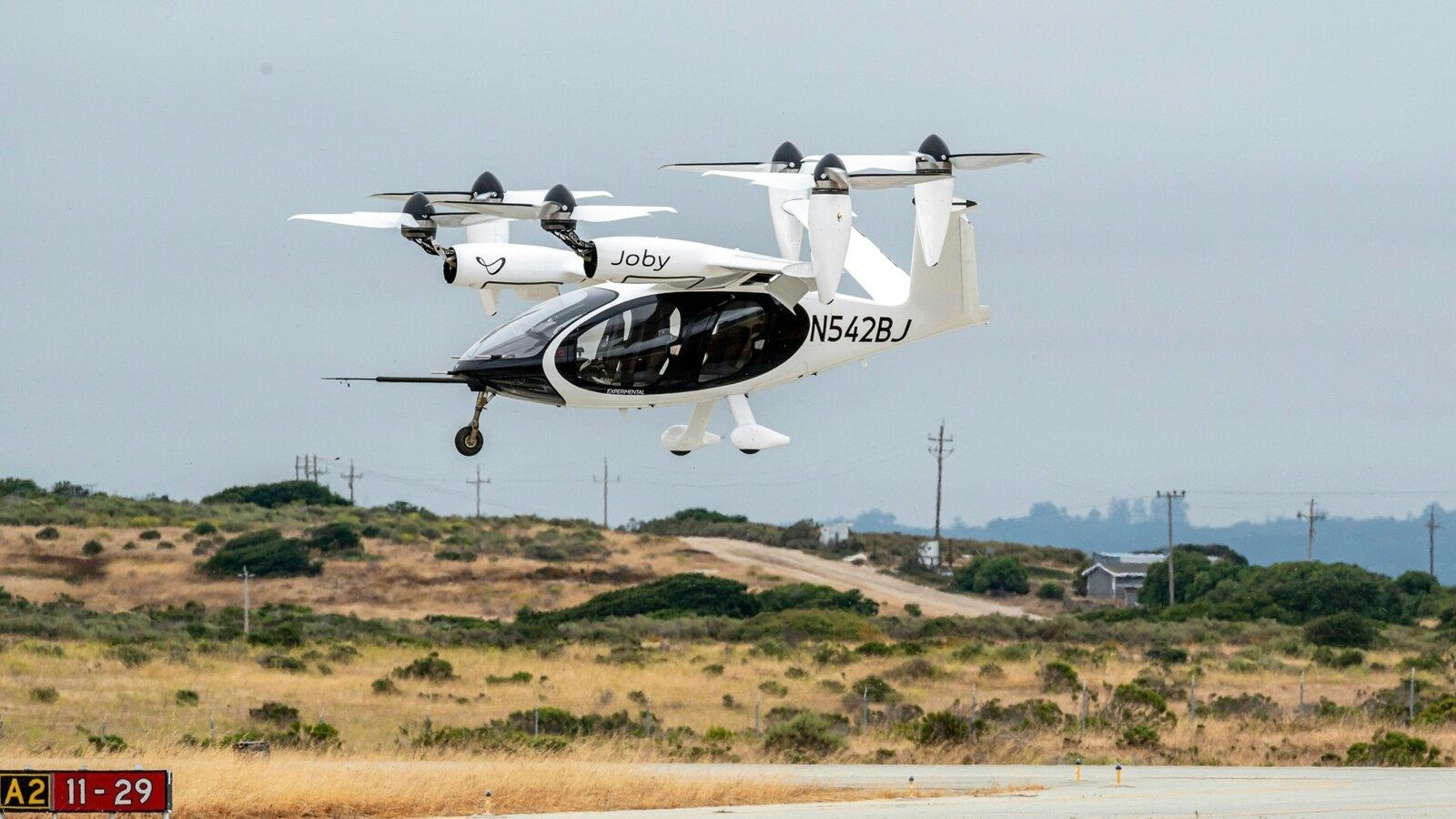
Global Analysis of the Air Taxi Market
Global Analysis of the Air Taxi Market
The global air taxi market is on the cusp of significant expansion, with its valuation expected to rise sharply from USD 3.3 billion in 2025 to USD 20.5 billion by 2035. This growth reflects a robust compound annual growth rate (CAGR) of 20.0% over the forecast period, driven by rapid technological advancements, infrastructure development, and evolving regulatory frameworks. The market’s trajectory is characterized by accelerated growth phases in both the early and later years, underscoring the transformative potential of urban air mobility solutions.
Market Growth and Key Drivers
From 2025 to 2030, the air taxi market is projected to increase from USD 3.3 billion to USD 8.2 billion, representing a CAGR of 21.0%. This initial phase is marked by heightened investment in air mobility infrastructure and significant progress in electric vertical takeoff and landing (eVTOL) technologies. The rising demand for urban air mobility, supported by pilot projects and government initiatives, further fuels this early-stage growth. Continuous innovation in air taxi design and operational capabilities also plays a crucial role in establishing a foundation for market expansion.
The period from 2030 to 2035 is expected to witness an even more pronounced acceleration, with the market expanding from USD 8.2 billion to USD 20.5 billion at a CAGR of 18.8%. This phase will be characterized by broader commercial adoption of air taxis across various applications, including passenger transport, cargo delivery, and short-haul urban travel. Key drivers during this stage include enhancements in supporting infrastructure, regulatory advancements, and growing consumer acceptance, which collectively contribute to the sector’s maturation and scalability.
Market Segmentation and Regional Dynamics
The air taxi market is segmented by range, mode of operation, propulsion type, application, end user, and geographic region. In 2025, the intercity segment, covering distances between 100km and 400km, is anticipated to dominate with a 63.0% market share. Geographically, North America, Asia-Pacific, and Europe emerge as the primary growth regions, each benefiting from strong technological ecosystems and supportive policy environments. Leading industry players such as Volocopter GmbH, Airbus, Boeing, Textron Aviation Inc., Beta Technologies, EHANG, and Lilium N.V. are instrumental in shaping the competitive landscape through ongoing innovation and strategic investments.
Growth Catalysts and Industry Response
The rapid evolution of the air taxi market is underpinned by breakthroughs in electric propulsion systems, the development of urban mobility infrastructure, and increasingly supportive regulatory frameworks. As urban congestion intensifies and the demand for low-emission transportation solutions grows, air taxis are gaining traction as a viable alternative for both intra-city and inter-city travel. Industry leaders are heavily investing in vertical takeoff and landing (VTOL) platforms, artificial intelligence-driven route optimization, and lightweight composite materials to enhance safety and operational efficiency. The integration of autonomous systems is also transforming vehicle design, promising to reduce long-term operational costs and improve reliability.
Governments and private investors are accelerating the commercial readiness of air taxis by funding pilot corridors, vertiports, and advanced air traffic management systems. Advances in battery technology and the gradual evolution of airspace regulations are expected to further facilitate market deployment, particularly in megacities and regions with advanced technological infrastructure.
Challenges and Market Dynamics
Despite the optimistic outlook, the air taxi market faces several significant challenges. Regulatory uncertainty remains a major obstacle, as authorities continue to develop standards for airworthiness, pilot certification, and airspace integration. Safety concerns are paramount, with public acceptance contingent upon demonstrated reliability and stringent oversight. Additionally, the high costs associated with research, development, and infrastructure pose ongoing hurdles for market participants.
Market responses have been largely positive, as evidenced by gains in Boeing’s stock following its air taxi initiatives. Competitors are responding with substantial investments in technology and infrastructure to secure their positions in this emerging sector, reflecting a competitive and dynamic market environment.
Outlook
The air taxi market is poised for strong and sustained growth, driven initially by innovation and investment, and later by increased adoption and technological maturity. While challenges related to regulation, safety, and cost remain, the sector’s long-term prospects are promising as urban air mobility becomes an integral component of future transportation networks worldwide.
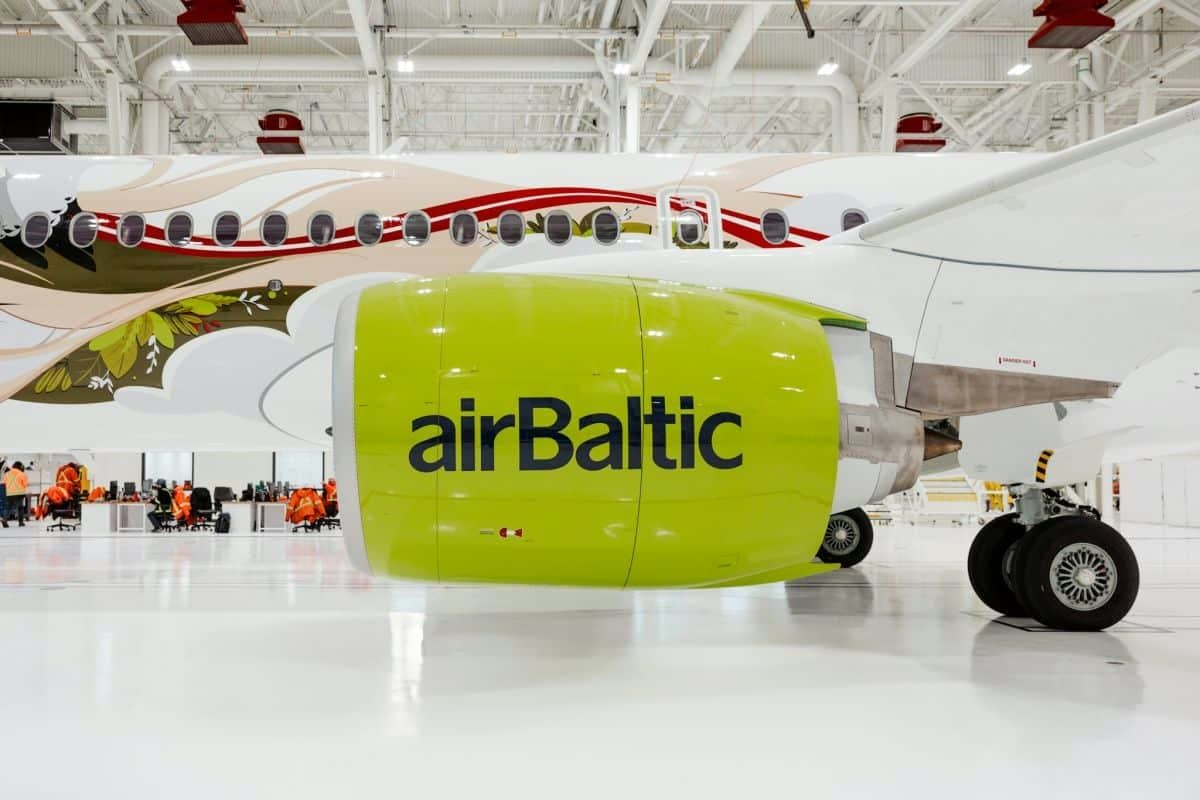
Latvian Government to Invest $16.3 Million in airBaltic
Latvian Government to Inject $16.3 Million into airBaltic Ahead of Delayed IPO
The Latvian government has approved an additional investment of EUR 14 million (approximately USD 16.3 million) in the state-owned airline airBaltic. This move aims to bolster the carrier’s financial position as it prepares for a planned initial public offering (IPO), which has now been postponed until at least 2026 due to persistent market volatility. The decision was finalized during a cabinet meeting on August 19 and is intended to sustain the airline until it can secure private capital.
Government and Private Sector Collaboration
Transport Minister Atis Švinka clarified that the government’s investment mirrors a previous EUR 14 million capital injection from the Lufthansa Group, which acquired a 10% stake in airBaltic. Prime Minister Evika Siliņa highlighted that the state’s funding is contingent upon this private investment, ensuring adherence to European Union state aid regulations that prohibit standalone government subsidies. The funds will be reallocated from the budgets of the finance and transport ministries, with no additional state investments planned at this time.
Earlier in the year, Latvia sought financial collaboration from its Baltic neighbours, Lithuania and Estonia, to co-invest in airBaltic. While Estonia declined the proposal, Lithuania continues to evaluate the possibility of participation.
airBaltic’s Position and Market Challenges
Currently, the Latvian government holds a 97.97% majority stake in airBaltic, which operates bases in Riga, Tallinn, and Vilnius, making it the largest airline serving the three Baltic states. The carrier has recently experienced positive travel demand trends, contributing to a reduction in its net losses, though financial pressures persist. The forthcoming IPO is expected to generate capital to support future growth initiatives and to refinance EUR 380 million in bonds issued in 2024, which carry a high interest rate of 14.5%.
The investment comes amid intensifying competition in the regional aviation market. Rival companies, including Jettime’s parent firm, are actively pursuing acquisitions such as their bid for CityJet, indicating potential shifts in the competitive environment. Industry analysts suggest that airBaltic’s reinforced financial standing may prompt competitors to recalibrate their strategies to protect market share.
Following recent clearance from German competition authorities, Lufthansa is anticipated to complete its stake acquisition by the end of August. Aside from Lufthansa, the only other private shareholder is Aircraft Leasing 1, a special purpose vehicle representing Danish investor Lars Thuesen, which holds a 2.03% stake.
As airBaltic prepares for its delayed IPO, the Latvian government’s renewed investment underscores the airline’s strategic significance to the country and highlights the challenges it faces amid evolving market conditions and heightened regional competition.
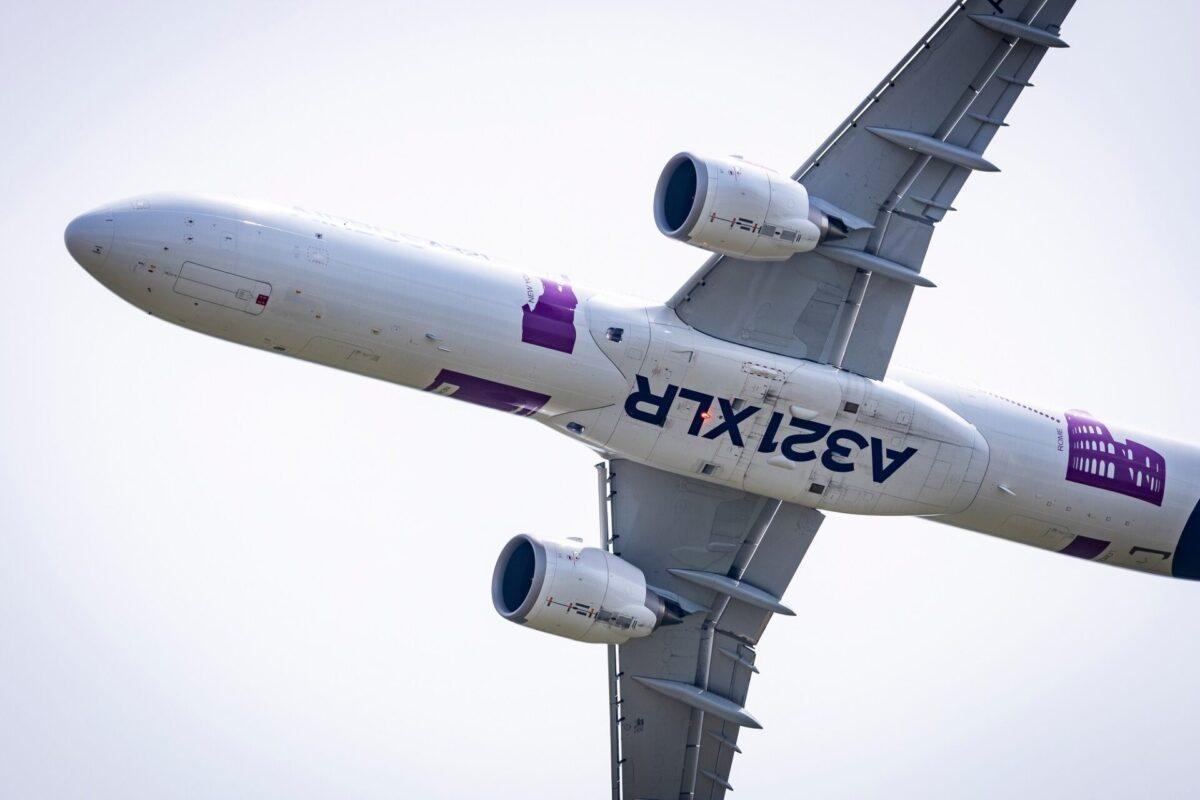
IndiGo A321XLR Delivery Timeline and Potential New Routes
IndiGo’s A321XLR Delivery Timeline and Expansion Strategy
India’s largest low-cost carrier, IndiGo Airlines, is preparing to receive its first Airbus A321XLR aircraft, now anticipated in December 2025. This new addition to the fleet is expected to significantly extend the airline’s international reach, enabling direct flights on longer routes that were previously inaccessible with its narrow-body aircraft. However, industry-wide production and supply chain disruptions pose risks to the delivery schedule, potentially affecting IndiGo’s ambitious global expansion plans.
The A321XLR, boasting a range of approximately 8,700 kilometers, will allow IndiGo to operate nonstop flights from major Indian hubs such as Delhi, Mumbai, and Hyderabad to destinations including Seoul, Athens, and Nairobi. These routes are central to the airline’s growth strategy through 2030, as it currently operates over 2,200 daily flights to more than 140 destinations across Asia, Europe, and Africa. IndiGo has placed an order for 69 A321XLRs, aiming to strengthen its presence in Europe, Northeast Asia, and East Africa.
CEO Pieter Elbers has described the A321XLR as a critical link between the airline’s existing A321neo fleet and its forthcoming long-haul Airbus A350 services, scheduled to commence in 2027. The extended range of the XLR model, which adds up to two hours of additional flying time, will open new markets such as Denpasar, Athens, and Nairobi, while reinforcing IndiGo’s foothold in established international sectors.
Challenges and Competitive Landscape
Despite these promising developments, IndiGo faces significant challenges. Delays in aircraft production and supply chains threaten to slow the introduction of the A321XLR, potentially postponing the launch of new long-haul routes and the planned rollout of business class services. These uncertainties have elicited mixed responses from investors, with some expressing concern over the impact on the airline’s expansion timeline, while others remain confident in IndiGo’s long-term growth prospects.
Competition is intensifying, notably from carriers such as Aegean Airlines, which is reportedly considering India for its initial A321LR routes. This emerging rivalry could affect key markets that IndiGo is targeting with its expanded fleet.
In response, IndiGo is advancing a multi-hub strategy designed to optimize fleet utilization and operational efficiency. Mumbai is positioned as the gateway to West Asia, Delhi will focus on Central Asia, and Hyderabad will support niche domestic and regional routes. This approach is intended to sustain and enhance the airline’s long-haul services.
To further strengthen its international network, IndiGo has established partnerships with major global airlines including Delta, Air France-KLM, Virgin Atlantic, and Japan Airlines. These alliances, facilitated through codeshare agreements, will extend IndiGo’s connectivity to over 30 cities across Europe and North America. Additionally, the airline has increased its order for wide-body Airbus A350s and plans to introduce Boeing 787 aircraft, diversifying its fleet and enabling direct service to high-demand long-haul destinations.
Leveraging India’s strategic geographic location—where 65% of the world’s population is within a five to six-hour flight—IndiGo aims to reduce dependence on foreign hubs and develop a self-reliant medium- and long-haul network. While supply chain delays present tangible obstacles, the airline remains focused on transforming its international connectivity and establishing itself as a globally competitive carrier.
Ask AeroGenie